

WHAT IF ...
A look at the fallout if the lower Snake River dams are demolished
 By MATTHEW WEAVER Capital Press
By MATTHEW WEAVER Capital Press
Final authority to breach the four lower Snake River dams remains with the 535 members of Congress.
But agricultural stakeholders, tribes and environmental groups agree on one thing:
The Columbia Basin Restoration Initiative recently signed by the Biden administration, four Northwest tribes and the states of Oregon and Washington is a pathway to breaching the dams.
The tribes and environmentalists say removing the dams is necessary for the recovery of several salmon species.
But agricultural stakeholders say tearing out the dams would have many other impacts, including irrigation water availability, power supply and transportation. Combined, replacing them or creating work-arounds would cost taxpayers tens of billions of dollars, they say.
Whether the dams — Ice Harbor, Lower Monumental, Little Goose and Lower Granite — ever come out is anyone’s guess, but if they
did, what would the impact to the region be?
That’s something the U.S. Army Corps of Engineers has studied “off and on” for more than 25 years, said Dylan Peters, public affairs specialist for the Corps district in Walla Walla, Wash.
The Corps will next study the impacts on transportation and recreation if the dams are removed. Those studies have not yet been funded, Peters said.
Under the new agreement, the federal government will review existing environmental compliance documents — such as the 2020 Columbia River System Operations environmental impact statement — and any additional information provided by the states, tribes and other stakeholders, and “initiate any additional environmental compliance its review determines to be necessary.”
The federal government is still discussing the steps it will take to meet that commitment, Peters said.

2016 PETERBILT 389LH - $90,000
Cummins ISX15 600HP w/ Eaton 18spd manual trans. 12,000lb Rockwell steer, Watson & Chalin 13,500lb lift axle, & 38,000lb flex air rears w/ DSH40 differentials 3.55 ratio. 250” wheelbase, former tanker w/ long frame & pintle hitch. Cab to end of frame length 257”
IN STOCK


JONES PERFORMANCE HOODS & FENDERS
For heavy truck models KW T800, W900, PB 357/378, 379 SH & LH, FL FLD120, M2-106, Volvo VNL & more!
NEW! 389 Standard and custom fenders now in stock! Fenders for T800 & 379 also available.



2011 FORD F-750 - $28,000
Cummins ISB 6.7L engine rated for 260HP w/ Allison automatic trans. Single rear dually axle, Meritor. 5.57 ratio. Blank canvas could be paired w/ flatbed or dry box, etc. 242,513 mi on odometer.

1996 FREIGHTLINER FLD112 - $22,500
Cummins M11 engine w/ 10spd manual trans. 12,000lb steer axle w/ 40,000lb tandems on Airliner suspension. Very clean inside & out.
509-321-5428
3020 N. Flora Rd. Spokane Valley, WA
highmtnhorsepower.com
admin@highmtnhorsepower.com













Lateral Tilt, ’10 Gleaner 8200-30’ Flex Head With Crary Air Reel & Cart $39,950 C
DRILLS
(4) IH 150 SPLIT PACKER HOE DRILLS, 12’, 18” Spacing $1,500 EA OR ALL (4) FOR $5,000 AGPRO DRILL PARTS, Meter Rolls. Blades, Packer Wheels/ Tires & More MAKE OFFER

‘13 GLEANER S77, 42189E/1626S Hrs, 4WD, ‘13, 9250



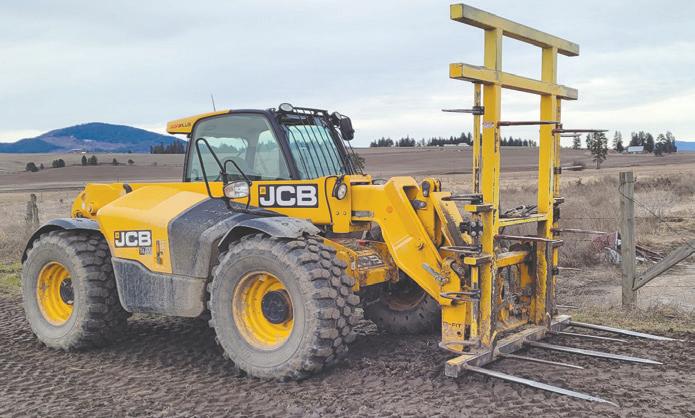







Classic beef recipes
Here are some classic beef recipes from the Montana Beef Council.
Classic country fried steaks and gravy
Ingredients:
Country-Fried Steaks:
• 4 beef Cubed Steaks, 1/4 inch thick (about 1-1/2 pounds)
Classic Gravy:
• 2 tablespoons butter
• 1/4 cup all-purpose flour
• 3 cups whole milk
• 1 to 2 teaspoons cracked black pepper
• 1/4 teaspoon seasoning salt
Country-Fried Steaks:
• 1-1/2 cups all-purpose flour, divided
• 1 teaspoon seasoning salt
• 1 teaspoon freshly ground black pepper
• 1/2 teaspoon paprika
• 1/4 scant teaspoon cayenne pepper
• 3/4 cup whole milk
• 1 egg
• 1/2 cup butter cracker crumbs
Serving Suggestions:
• Mashed potatoes, fried egg (optional)
COOKING:
CLASSIC GRAVY:
1. Melt butter in medium sauce pan over medium heat. Stir in flour; cook and stir 4 minutes. Stir in milk; bring to a boil, whisking constantly. Reduce heat; simmer 2 to 3 minutes or until sauce thickens slightly, stirring occasionally. Add black pepper and seasoning salt, as desired. Cook 1 to 2 minutes, whisking constantly until gravy is smooth and thick. Keep warm.
COUNTRY-FRIED STEAKS:
1. Combine flour, salt, black pepper, paprika and cayenne pepper in shallow dish. Remove 1/2 cup seasoned flour; set aside. Beat milk and egg in separate shallow dish until blended; set aside. Combine remaining 1/2 cup seasoned flour with cracker crumbs in separate shallow dish.



Season beef Cubed Steaks with salt and pepper, as desired. Dip each steak into seasoned flour, milk mixture, then into flourcracker mixture, turning to coat both sides.
COUNTRY-FRIED STEAKS:
1. Heat counter top fryer to 350°F per manufacturer’s instructions. Fry prepared steaks 2 to 3 minutes until internal temperature reaches 165°F and golden brown on all sides; drain on paper towels. Fry in batches,
 By Dana
By Dana
• 1 cup minced sweet onion
• 1 cup minced green bell pepper
• 1 can (14-1/2 ounces) unsalted tomato sauce
• 1/4 cup barbecue sauce
• 1/4 cup ketchup
• 1 tablespoon Worcestershire sauce
• 2 teaspoons packed brown sugar
• 1 teaspoon dry mustard
• 4 whole wheat hamburger buns or 8 slider buns
Toppings:
• Dill pickle slices, coleslaw, American or Cheddar cheese slices (optional)
COOKING:
1. Heat large nonstick skillet over medium heat until hot. Add onion, cook 3 to 5 minutes until golden brown. Add Ground Beef and bell pepper; cook 8 to 10 minutes, breaking beef into 1/2-inch crumbles and stirring occasionally.
Cook’s Tip: Cooking times are for fresh or thoroughly thawed ground beef. Ground beef should be cooked to an internal temperature of 160°F. Color is not a reliable indicator of ground beef doneness.
sandwiches.
Cook’s Tip: You may serve the beef mixture over hot cooked whole wheat pasta instead of buns.
Classic beef pot
roast Ingredients:
• 1 beef Cross Rib Chuck Roast or Arm Chuck Roast Boneless (2-1/2 to 3-1/2 pounds)
• 1/2 cup all-purpose flour
• 1 teaspoon salt
• 1 teaspoon pepper
• 1 tablespoon vegetable oil
• 4 cups reduced-sodium beef broth
• 2 tablespoons tomato paste
• 2 teaspoons dried thyme leaves
• 1 pound red-skinned potatoes (about 1-1/2-inch diameter), cut in half
• 1 pound carrots, peeled, cut into 1-1/2-inch pieces
• 2 large onions, cut into 8 wedges each
COOKING:
if needed to avoid overcrowding the fryer. Sprinkle steaks with salt and paper immediately after removing from oil, as desired. Keep steaks warm.
Classic beef sloppy Joes
Ingredients:
• 1 pound Ground Beef
(93% lean or leaner)
2. Stir in tomato sauce, barbecue sauce, ketchup, Worcestershire sauce, brown sugar and mustard; increase heat to medium-high. Bring to a boil; cook 5 to 10 minutes or until sauce is thickened, stirring occasionally. Season with salt, as desired.
Cook’s Tip: You may add an additional 2 tablespoons barbecue sauce for sweeter, richer flavor.
3. Divide beef mixture evenly among buns. Top with pickles, coleslaw and cheese, if desired. Close
1. Combine flour, salt and pepper; coat beef roast with 2 tablespoons flour mixture. Reserve remaining flour mixture. Heat oil in stock pot over medium heat until hot. Place roast in stockpot; brown evenly. Pour off drippings.
2. Combine broth, tomato paste and thyme in stock pot; whisk in reserved flour mixture. Bring to a boil. Reduce heat; cover tightly and simmer 1-3/4 to 2 hours. Stir gravy. Add potatoes, carrots and onions to stockpot; bring to a boil. Reduce heat; cover tightly and simmer 45 minutes to 1 hour or until roast and vegetables are fork-tender.
3. Carve roast into slices or chunks; serve with vegetables and gravy.
Dams
Continued from Page A1
Salmon
If the dams are taken out, is fish recovery guaranteed?
The answer depends on who you ask. Environmentalists see it as a silver bullet, allowing the salmon to thrive. Others, including agricultural groups, aren’t so sure.
“The short answer is yes,” said Brian Brooks, executive director of the Idaho Wildlife Federation.

‘NOAA FISHERIES DOES NOT RELY HEAVILY ON SARS AS A BAROMETER BECAUSE THEY DO NOT CAPTURE SURVIVAL ACROSS THE WHOLE LIFE CYCLE.’
Michael Milstein, public affairs officer for NOAA Fisheries.

Bill Arthur Brian Brooks
“Thousands of scientists ... and other representative organizations who have dedicated their lives to fish and fish conservation have confirmed, by their expert opinion, that fish would return.”
“We have a really high confidence that we can recover healthy, abundant salmon and steelhead populations,” said Bill Arthur, chair of the Snake and Columbia River Salmon campaigns for the Sierra Club. “That’s based on the science, reports and studies that have been done, as well as the history of the area and with other dam removals.”
To achieve “healthy and abundant” population benchmarks, Brooks, Arthur and other envi-
ronmentalists point to Snake River spring and summer chinook smolt-to-adult return ratios (SARs). They should be a sustained 4% or more, but have been below 1% for years, they say.
“NOAA Fisheries does not rely heavily on SARs as a barometer because they do not capture survival across the whole life cycle,” said Michael Milstein, public affairs officer for NOAA Fisheries.
See Tribes, Page A7

FX-742


NEW 42’ SCHULTE FX-742 ROTARY CUTTER
with fixed knife shredder and hydraulic tongue jack. 42’ cutting width makes those long days short again. Use one cutter where traditionally two or three cutters were needed. Cover more ground, while reducing the number of tractors and fuel required in an operation. Increasing your efficiency means more money in your pocket. Unique 5-plex design flexibility allows for a completely “road-able” machine at a 118” (3m) transport width. iF280/70R15 stubble proof tires, fixed knife shredder kit with updraft blades and shrouds to resize residue quickly, single chain front and rear and rubber belting front, safety light kit. Cuts 42’ wide by 2”-6” high at up to 2” diameter. Requires 250hp minimum. 6,500# hitch weight/18,000# total weight. This unit has new optional hydraulic jack.




XH-1500 ROTARY CUTTER 15’, Bondioli high horsepower gearboxes and drive lines, 1.5”-17.5”

FX-318 ROTARY CUTTER 18’ Width, CW 540 RPM driveline, Equal Angle Hitch, pan kit, single chains, front half belting, 24 x 8-14” 20 Ply severe duty tires (8).




FX-530 ROTARY CUTTER *30’ of
Odessa, WA • (509) 982-2644 • 1-800-572-5939
"THE FARM EQUIPMENT SPECIALIST" www.walterimplement.com






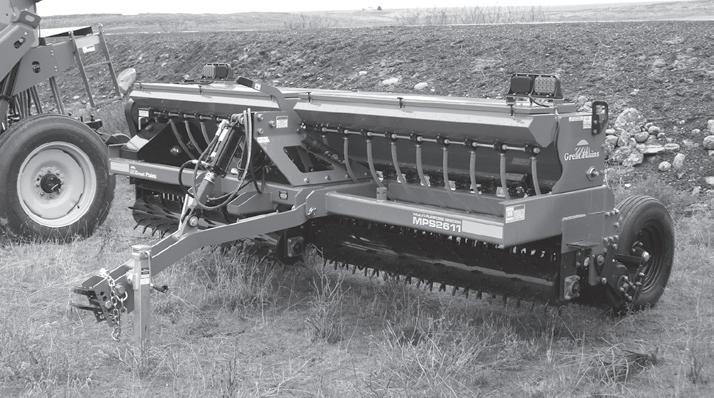













I2013 Freightliner Cascadia, DD13 470 Hp, 10 Spd, AC, 1 Locker..$29,900


2016 Freightliner, DD15, 475 hp, DT12 Automated transmission, A/C, 90% tires...........$39,900

2014
IT’S THE PITTS
By Lee PittsA crash landing
used to work ring at a lot of horse sales: Quarter horses, Thoroughbreds, Arabs, Paints, Appaloosas, fast horses, slow horses, warmbloods and horses that were not so hot.
It was always exciting to sell a multi-million dollar race horse or an $18,000 mule. I also remember the lowlights, like the consignment sale back in the 1970s when only 10% of the horses sold because the consignors thought too highly of their horses. There is one episode that stands out above all the rest.
At Quarter Horse sales it has been a tradition that the consignor would ride the horse into the ring and spin him around so fast that everyone sitting in the front row ended up with a pile of wood chips and the byproduct of digestion in their lap.
At the auctioneer’s coaxing the rider would then dismount and remove the saddle so that everyone could see the horse’s back.


tors when the horse in the ring backed up a half-a-step causing the rider to fall with great velocity right on top the saddle horn. I swear you could hear the THUMP two counties away.
The rider didn’t really fall off the horse as much as he melted off it with his only padding being the handkerchief in his back pocket. The crowd let out a collective “ooow” as the rider alternated between being beet red from embarrassment and “A Whiter Shade of Pale,” to quote the song.
THE RIDER DIDN’T REALLY FALL OFF THE HORSE AS MUCH AS HE MELTED OFF IT WITH HIS ONLY PADDING BEING THE HANDKERCHIEF IN HIS BACK POCKET. THE CROWD LET OUT A COLLECTIVE “OOOW” AS THE RIDER ALTERNATED BETWEEN BEING BEET RED FROM EMBARRASSMENT AND “A WHITER SHADE OF PALE,” TO QUOTE THE SONG.
At every sale there was a very young kid piloting the horse to show how gentle the horse was and there’d also be at least one knucklehead who, when asked to dismount by the auctioneer, would instead stand up in the saddle and twirl his rope. I’ve also seen them crack a whip and one numbskull even fired off a blank round that made the pavilion shake, but the horse slept right through it.
Later the new owner discovered that his newly acquired horse was deaf and dumb.
Standing up on the saddle was the rider’s moment in the sun; his 15 seconds of fame, so to speak. I’m using the masculine instead of feminine here because I’ve never seen a female perform such ridiculous antics.
Or, I should say, attempt to. I’ve witnessed a few disasters when the horse either moved a little, or in one case left the building entirely with great urgency after the consignor lit a cherry bomb which he’d obviously NOT rehearsed with his horse prior to the sale.
The worst crash landing I ever saw occurred in front of 2,000 hushed specta -
As the rope he’d been twirling fell down around his shoulders the embarrassed rider hunkered down on one knee trying to resume normal breathing, suffering terribly from what we can only politely describe as “a groin injury.” It’s a feeling only a man can explain but really there are no words in the English language to adequately describe the extent of the poor man’s suffering.
Meanwhile the bidding on the horse stopped cold and the auctioneer gaveled down the horse for two-thirds of its real value to a rancher friend of mine.
As the auctioneer tried to coax the rider out of the ring so we could resume our business the rider walked what we would call “a little daintily.”
A bystander carried his saddle out for him in an act of compassion.
A couple years later I ran into my rancher friend who purchased that horse and I asked him whatever happened to the rider. “He quit training horses after that,” my friend replied, “and who can blame him? I hear he still walks a little funny, hasn’t sired any offspring, he went from singing bass to soprano in the church choir but there is one bit of good news: he’s no longer cross-eyed.
But that horse I bought from him sure turned out to be a dandy. Initially I bought him to add to the remuda but when I saw what a great horse he was I saved him for my own personal use.
Whenever I call out that horse’s name it reminds me of that sale. We call him THUD!”
Tribes
Continued from Page A5
Last year, NOAA West Coast Regional Office branch chief Ritchie Graves estimated about a 75% survival rate for salmon moving through the four lower Snake River dams. Mortality would likely be cut in half if the dams were removed, he estimated.
However, warming ocean conditions and delayed mortality — when juvenile fish die later as a result of stress from passing through the dams — are unknown variables for fish survival.
“Currently, there are varied projections” for delayed mortality, Milstein said. “If there is high delayed mortality, then there may be a greater effect from breaching.”
Tribes
Before the dams were built, tributaries to the Columbia River ran wild, including the Snake, said Austin Smith Jr., general manager for the Confederated Tribes of Warm Springs natural resources branch.
“They ran a little bit lower, you had free-moving bodies of water that allowed salmon to travel through these areas into farther reaches into the mountains and other tributaries,” he said.
“When these dams were put in, it flooded a lot of historical villages, grave sites, medicinal gathering areas
and cultural food gathering areas,” Smith said.
Representatives of the Confederated Tribes of the Umatilla Indian Reservation and Confederated Tribes of the Yakama Nation declined to comment for this story. Representatives of the Nez Perce Tribe did not respond to Capital Press requests for comment.
The river
River volumes would not change a great deal, as the dams are run of the river, with no flood storage capacity, said Peters, the Corps spokesman. River velocities would increase.
River behavior would also be subject to upstream operations at the three Hells Canyon dams, he said.
Water temperatures could be expected to be higher, unless the Corps is required to continue releasing water from Dworshak Dam on the Clearwater River to cool the Snake River, he said.
With the dams gone, river flows would likely move sediments downstream, causing short term impacts on all species in the lower Snake River and possibly into the McNary Reservoir on the Columbia River near Kennewick, Wash.
“Presently, lessons are being learned on this topic from the removal of the Klamath River dams,” Peters said.
There’s currently no indication that any communities would be displaced or lose ground, but erosion along the river banks could

be expected because of increased water velocities, Peters said.
Barging would no longer be a viable transportation method, Peters said. About 60% of U.S. wheat exports move by barge through the Columbia-Snake river system. About 10% of that traffic transits the four Snake River dams.
Barging

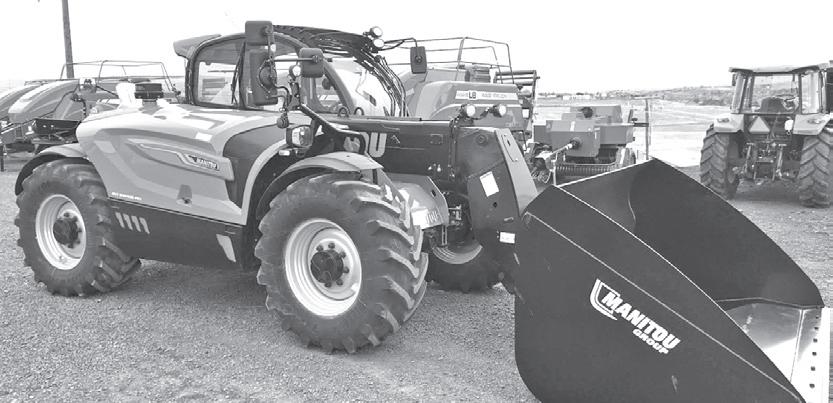

2021 MASSEY WR9980 WINDROWER, 342hrs, 16’ rotary double conditioner header $199,500
2019 MACDON M1170 SWATHER TRACTORS WITH MULTIPLE HEADS TO CHOOSE FROM CALL
2018 MACDON M1170, 2765hrs with brand new D115X 15’ draper header $135,000


TILLAGE & DRILLS

2018 GREAT PLAINS 3S-4000HD 40’ DRILL, small seed kit $82,500

MISCELLANEOUS
AKTIV 3 POINT 6-5’
BAR MOWER, decent shape $995 TERREX-TC75 17,000 LB. EXCAVATOR WITH STEEL TRACKS AND HYDRAULIC THUMB $52,500
JOHN DEERE 5820 FORAGE HARVESTER, mid-80’s, 4WD with head, 6308 hrs $39,900
LAND PRIDE-SB1574 74” THREE POINT SNOW BLOWER, like new $4,200
UNVERFERTH 7200 BANKOUT WAGON, 750bu $18,900 2023 CASE TV620B TRACK LOADER, full cab, high flow, 84” bucket, 100hrs $115,000









Washington Grain Commission
The Ice Harbor Lock is 675 feet long and 86 feet wide, with a minimum depth of 16 feet. It can accommodate a tugboat pushing up to four barges. Proponents of the dams say the use of barges on the Snake and Columbia rivers is far more efficient than using trucks or railroad.
Farming
Continued from Page A7
The dams hold back 80 to 100 feet of water, creating navigation pools deep enough to travel to Lewiston, Idaho, said Rob Rich, vice president of marine services for Shaver Trans-
portation Co., a tug and barge company.
“No dams, no locks, no depth of water, no barge transport,” Rich said.
Without the Snake River dams, navigation would go only as far upstream as East Pasco and Burbank, Wash., he said.
Rich estimates 650 to
700 barge loads of wheat originate on the Snake River each year.
Each barge carries 3,600 tons, or 120,000 bushels, of wheat, Rich said.
 Scott Corbitt
Scott Corbitt
About 28% of Idaho’s wheat crop goes onto barges, said Scott Corbitt, general

manager of the Port of Lewiston, which is upstream from the four dams.
Loss of barging would increase grain shipping costs by 30 to 50 cents per bushel, or $70 million a year, Corbitt estimated. Those added costs would have to be



absorbed by farmers.
Farming Dam removal would impact approximately 40,000 acres of irrigated farmland upstream of the Ice Harbor Dam, including orchards, potatoes and other vegetable crops, said Peters, with the Corps.
See Land, Page

Farmers would need to fi nd other sources of water or switch to crops such as dryland wheat or chickpeas, which have lower yields and produce far less revenue.
“Should the reservoirs be removed, it is likely that wells at the current levels in that area may no longer be viable, so simply extending wells may be costly,” Peters said.
The Columbia-Snake River Irrigators Association estimates it would cost the state and Bonneville Power Administration up to $1 billion to mitigate disruption to irrigators during dam removal.
Disruption would be unavoidable for one to two years while the system of 25 pump stations is rebuilt, said Darryll Olsen, board representative for the association. Overall regional, annual household income losses cannot be fully mitigated, he noted.
Land value
ing a massive tax base decrease, and yet the budgets are still going to be there,” he said. “It would raise the property taxes on the remaining people terribly.”
Trucks and rail
It takes 35 100-ton jumbo hopper railcars or 134 semi-trucks to carry the same amount of wheat as a single 3,500-ton barge.
Typically, a tugboat pushes four barges, so a single four-tow barge carries the same amount of wheat as 140 railcars, or 538 semi-trucks, according to the Pacifi c Northwest Waterways Association. Shuttle trains are up to 115 railcars.
There has been discussion that trains would be a viable methodology to get products to market, but the current Lower Columbia train corridor is thought to have limited capacity and little area to expand, said Peters, with the Corps.
“Fuller study would help better understand this issue,” he said.
circular track needed for shuttle rail terminals.
Railroads haven’t shown they can handle the traffi c they have now, agriculture stakeholders say.
“Our railroad colleagues candidly state they couldn’t get us timely deliveries with cars to gather from across the U.S. and Canada. They cannot match locally available barges and tugs in the heart of busy seasons,” said Alex McGregor, chairman of The McGregor Co., which provides seed and crop inputs to the region’s farmers. “The rationale that everything could be handled by rail doesn’t hold water.”
Pollution
Continued from Page A8 See Energy, Page A11
“Will there be an impact to the market and what properties sell for if they tear out those dams?” said John Rosenau, Franklin County assessor in Pasco, Wash. “I don’t have a crystal ball, but I can tell you emphatically, yes.”

Some dam critics suggest updating or replacing existing or abandoned short-line railroads to handle grain.
Shifting from barge to truck and rail would result in increases in nitrogen dioxide, carbon dioxide and other harmful emissions by more than 1.25 million tons per year, according to the Pacifi c Northwest Waterways Association’s 2023 “social justice impact” report. The association is a nonprofi t trade group that supports “effi cient, reliable and












In Franklin County, some irrigated farmland sells for more than $20,000 per acre, and the average is between $18,000 and $19,000, Rosenau said. Dryland farmland sells for $800 to $1,000 per acre, less for rangeland, which is about $100 per acre.
Rosenau expects an impact of “literally billions of dollars” in Franklin County alone.
“It would have an impact on every piece of property, it will have an impact on the sales value of residential homes and industry,” he said.
Rosenau used an example in which all property values suddenly drop by 50%. If that happened, it would double the tax rates residents pay to the various taxing districts.
“You would end up hav-
“The navigation-wheat interests are deathly afraid of an objective analysis of the Lower Snake River rail transport alternative,” said Olsen, with the irrigators association.
The association believes the state needs to request a proposal from railroad operators Watco, a supply chain logistics company, and the Union Pacifi c Railroad for an operational and fi nancial review of the rail analysis.
It would take a $1.3 billion capital investment to expand the highway and rail network to ensure the delivery of 5 million tons of goods currently shipped by barge, said Corbitt, of the Port of Lewiston.
River terminals on the Snake River do not possess the rail track required to load out unit trains of 110 cars effi ciently, said Eric Jessup, Washington State University assistant research professor. Most don’t have the necessary space to develop large




ADVERTISER
















Accucon
Auction Sales Company ................
Ag Trucks and Equipment
Agpro Marketing & Mfg., Inc.
Agri-Tool and Supply LLC
Ag-USA












208-507-0187 A6
509-534-4460 B2
541-296-1012 ... C15
509-338-7346 C1
208-746-2212 B8
800-321-5460 C14
541-788-8918 A14
AgWest Farm Credit C8
Allen-Jac, Inc.
Alta Forest Products
Andy Knapp
Bank of Eastern Oregon
Barnes Welding, Inc.
Basin Refrigeration & Heating
Bell Equipment, Inc.
Big Fat Seed Grain Cleaners
Big Iron Repair
Booker Auction
Burlingame Machinery Consignments
Class 8 Trucks
Dayton Tractor & Machine
D & S Tires
Ed-Ka Manufacturing, Inc.
Fab-Mech
Farm Equipment Headquarters
Farm & Home Supply
Farmland Tractor Supply
Greyn Fertilizer Equipment
Harvest Solutions
Highline Grain Growers ..........
High Mountain Horsepower
Hillco Technologies, Inc.
Inland Gear
Jerry’s
208-536-3700 C7
208-290-4547 B2
509-466-6153 B3
541-676-9125 C9
509-745-8588 B2
509-292-3243 C10
208-937-2402 B13
406-403-4600 C10
509-770-5560 C11
509-297-9292 A7, C12
509-240-2799 A16
509-534-9088 A6
509-382-4824 A13
208-635-0700 C9
509-635-1521 B14
509-597-7065 C2
541-276-6222 A7
509-843-3395 B10
877-928-1646 B3
406-466-5356 A10
541-786-2358 C11
509-982-2691 .... C3
509-321-5428 A2
800-937-2461 A2,C5
800-366-5962 B4 Irrigation






































FILENAME:
EXPORT SLUG: FOR: SIZE:
LOCATION:
Energy
environmentally sustainable waterways.”
PNWA equates the carbon dioxide increase to adding one large coal-fired power plant every two to three years.







mw snake dams study
2 col x 15p purge/cp1
The four dams currently have a peak output of 3,033 megawatts — enough electricity to power one-third of the homes in Washington, said Peters, of the Corps. That’s 18 times more than the power produced by the four Klamath River dams, which have been demolished.
“These dams more than pay for themselves in hydropower production alone,” Peters said. “It costs approximately $150 million to operate and maintain these four dams annually. Meanwhile, they generate an average of $300 million in hydropower each year.”
Power rates
200110_cp1_news_akm snake.dams.ai 200110_cp1_news_akm snake.dams.pdf
BPA serves about 2 million public power households across Washington, Oregon, Idaho and Montana.
‘THERE IS NOT A CONSUMER-OWNED
UTILITY IN (BPA’S) FOOTPRINT WHOSE COSTS WOULD NOT GO UP SIGNIFICANTLY AS A RESULT OF BREACHING AND REPLACEMENT, WITH WHAT’S AVAILABLE TODAY.’
“The (Lower Snake River) dams’ greatest value are their ability to meet power grid demands during times of emergency, such as hot or cold weather snaps from California to Montana,” Peters said. “Their power production can be ramped up to meet grid needs in minutes, something only viable through hydropower or natural gas.”
Adding additional renewable energy and capacity would take approximately five to seven years after congressional approval to breach the dams, and possibly up to 20 years if additional new large-scale transmission lines are required, according to the Bonneville Power Administration, citing a 2022 study from the Energy and Environmental Economics Inc. consulting firm.
Continued from Page A9 See Next, Page A12
Total replacement costs of the power the dams provide would be about $12 billion, according to BPA. Public power costs would increase by 8% to 18% per year, across most scenarios.
Battery storage cannot cost-effectively replace hydro capacity in the Northwest due to charging limitations during energy shortfall events, BPA said.
Some larger public utility districts in BPA’s coverage area have access to broader networks of electricity, said Doug Johnson, BPA senior spokesman. Some smaller municipalities rely directly on BPA for all of their power and may have less flexibility, he said.
“There is not a consumer-owned utility in (BPA’s) footprint whose costs would not go up significantly as a result of breaching and replacement, with what’s available today,” Johnson said.


‘10
HILLSIDE, 4WD $115,000
‘09 CASE IH 8120 HILLCO HILLSIDE, 4WD $225,000
‘09 CASE IH 7088 HILLCO HILLSIDE, 4WD $125,000
‘07 CASE IH 8010 HILLCO
‘06





Next
Continued from Page A11
Next steps
A possible new environmental impact statement is concerning, particularly under the Biden administration’s “lofty and undefined” goal for “healthy and abundant” species, said Anthony Pena, PNWA government relations manager.
“We certainly support increased engagement with affected stakeholders,” Pena said. “However, our confidence in the administration’s ability to do so has waned from our recent experience in the (White House Council on Environmental Quality)-led mediation.”
Many ag stakeholders felt they were excluded from the mediation process.
Asked if fish survival outweighs possible negative consequences, Idaho Wildlife Federation’s Brooks argues that it’s a

“false duality perpetrated by political rhetoric.”
“We’re not interested in taking out the dams until we have power replaced, until we have transportation infrastructure in place,” he said. “My organization talks to a lot of
farmers. We want them to know we are not here to hurt them, we want them to know we want their price per bushel to remain the same and even better.”
Salmon recovery on the lower Snake River has cost $26 billion so
far, adjusted for inflation, Brooks estimates. He cites a “cumulation of spending” from BPA’s fish mitigation program, NOAAfunded projects, and the cost of “forgone” water sent downstream to mitigate the impacts of the
dams, to increase current and cool the water.
“What if we took $26 billion and we built new infrastructure that doesn’t impede fish, is new rail, that’s clean energy, that’s clean transportation infrastructure?” he asked.




































With a bit of spectacle, Oregon FFA elects
2024-25 offi cers
By KYLE ODEGARD Capital PressREDMOND, Ore. — The main lights went dark in the First Interstate Bank Center in Redmond, Ore., and spotlights traced through the crowd clad in blue jackets.
“Sirius” by the Alan Parsons Project — the iconic music used to announce the starting five for Michael Jordan’s Chicago Bulls — pumped through the sound system, its riff repeating, the anticipation building.
And then a winner was declared to cheers, hugs and a few tears.
The Oregon FFA 2024 state convention wasn’t short on spectacle as delegates voted in a new crop of state officers the morning of Sunday, March 24.
The 2024-25 Oregon FFA state officer team includes: President Dale Nelzen of Molalla, Vice President Spencer Romans of Nyssa, Secretary Hunter Bingham of North Powder, Treasurer Vivian Seaholm of Tillamook, Reporter Julie Amos of Camas Valley and Sentinel Taft Rice of Madras.



A big responsibility
After the intense business session, Oregon FFA CEO Phil Ward congratulated the new faces of the organization in a private meeting.
“Now it’s not about you anymore. It’s about those 16,500 members around the state. … It’s a big responsibility,” Ward said.
The high school seniors expressed sympathy for those who took a risk, put themselves forward and weren’t elected. Winners were chosen from a pool of 10 finalists.
Officers also were somewhat shocked by their good fortune.
“Give me two to four business days and I’ll try to comprehend what happened,” Nelzen quipped.
“I’m so happy for this opportunity,” Romans said.
“I’m thrilled for each of you,” Ward responded.
Nelzen was a late bloomer with FFA. He said he wasn’t sure he wanted to join the organization until the end of his freshman year. He determined he wanted to be an officer last











FFA
Continued from Page A13
summer and started reaching out to past officers for guidance.
Romans, on the other hand, had known he wanted to be an officer since seventh grade, when he went to the state convention with his older brother. He said he tried to become
the best version of himself and get closer to God since he made his goal.
Setbacks, vulnerabilities
Some officers discussed setbacks and vulnerabilities during their candidate speeches.
Rice, for example, spoke about a traumatic leg injury he suffered in sports that pushed him away from athletics and toward FFA.
He said he grew in so many ways, including with his faith. “I thought it happened for a reason,” Taft said.
Officers said it was important to open up, because others can see they’re not alone in their struggles, and fellow FFA members can support them.
“If it makes a difference with one member, it makes a difference,” Nelzen said.
Amos said being elected an officer
Advertisement
Healthy soil is filled with oxygen. Beneficial aerobic microbes need this oxygen to live. Take away their oxygen and harmful anaerobic microbes will take over. AG-USA is on a mission to help you have highly structured soil and great nutrient availability!
Pitfalls of Anaerobic Soil
Compacted soil is anaerobic soil. MycorrPlus helps turn this soil into aerobic soil and take out compaction Pathogens. Most pathogens do best in anaerobic soil conditions. Anaerobic soil empowers pathogens to successfully compete with aerobic bacteria for food and even kill them, resulting in pathogens dominating the soil. Turning soil aerobic displaces pathogens!
Poor growth. Roots need a soil oxygen content of about 10% in order to grow. If oxygen isn’t present where soil meets roots, as is true in anaerobic soils, it hampers nutrient uptake and plant growth. Roots will stop growing, and if they are deprived of oxygen long enough, roots will die.
Airflow in the soil is especially important to legumes, as their nodules fix nitrogen from the air into the soil.
This is one of the reasons why legumes do so much better when MycorrPlus is used to highly structure soil and bring air down to the root zone.
Six Causes of Anaerobic Soil
1.Excessive rainfall is the number one cause of anaerobic bacteria taking over the soil If the soil is supersaturated, water will fill the air pockets in the soil If this condition continues for more than 2 weeks, anaerobic bacteria tend to take over the soil. What if you apply MycorrPlus-A and then it rains for weeks? Oxygen is used up and aerobic soil microbes struggle to breathe. Anaerobic microbes, which do best in the absence of air, will take over. Fortunately, once the water in the soil subsides, an application of MycorrPlus-A can help restore aerobic soil.
2.We use cultivation to break up the soil. Unfortunately, it also breaks up the small air pockets in the soil. Without these, when rains come, the soil can become even more compacted.
3.Heavy equipment, like tractors, tend to collapse air pockets. The more times across a field, the greater the compaction. Then, even a little rain tends to run off instead of soaking in.
Plus TM
4.As animals graze, it compacts the top few inches of soil. This is especially true when the soil is wet.
5.Chemical applications make it harder for aerobic microbes to live in the soil. Herbicides and other cydes kill them.
6. Poorly drained areas of a field tend to stay waterlogged, which creates anaerobic conditions. Tiling a field can help remedy this.
Overcoming Anaerobic Tendencies
Of course, good farming practices that encourage beneficial microbes are always helpful. Things like rotational grazing, crop rotations, cover crops, using natural fertility measures and minimal tillage all help!
Humic acids can help add structure to the soil. AG-USA used to sell humic acids, but not anymore. MycorrPlus promotes the production of lots of humic acids right in the soil.
Earthworms help aerate the soil. They emit a sticky substance that helps keep their tunnels from collapsing
MycorrPlus helps transform the soil into a perfect habitat for earthworms!
MycorrPlus-A and O are themselves biostimulants that promote the growth
Like a center pivot for dryland farmers!
Reduces the need for LIME and other fertilizers
MycorrPlus is a liquid bio-stimulant that helps remove compaction by highly structuring the soil. It creates something like an aerobic net in the soil that retains nutrients and moisture. It contains sea minerals, 20 strains of aerobic bacteria, 4 strains of mycorrhizal fungi, fish, kelp, humic acid and molasses. $22 50 to $45/acre.

To learn more, call 541-788-8918 and request a free information packet. Save a considerable amount of money on shipping by buying from our West Coast office! AG-USA West Coast office: Global Restoration LLC, 1513 NW Jackpine Ave., Redmond, OR 97756 (541) 788-8918
was surreal, in part because she joined FFA as a sophomore when Camas Valley added its chapter.
Oregon FFA officers will take a gap year and work together, traveling around the state for 265 days of the year to the 120 schools with an FFA chapter.
By being elected, the teens become role models and something akin to celebrities for FFA members throughout Oregon.

of aerobic bacteria and mycorrhizal fungi. MycorrPlus helps kick carbon sequestration into high gear, then MycorrPlus microbes use this carbon to help build and rebuild soil structure.
How can MycorrPlus help in areas that tend to become waterlogged?
First, the timing of the application of MycorrPlus is important. It needs to be applied at a time when the soil is not waterlogged and will not become waterlogged for a few months. You want to give MycorrPlus time to work!
If MycorrPlus has enough time to structure soil a foot down, that means the soil can then hold 6” of rain. Two feet of structuring = 12” of rain. Three feet = 18” of rain. It can be difficult to turn waterlogged areas around, but with some diligence and help from heaven with the timing of rains, it is possible!
Conquer your anaerobic soil. Call 541-788-8918 today and request a free information packet!
Or go to: www.AG-USA.net/w.php
Conquer Nature by Cooperating with it!























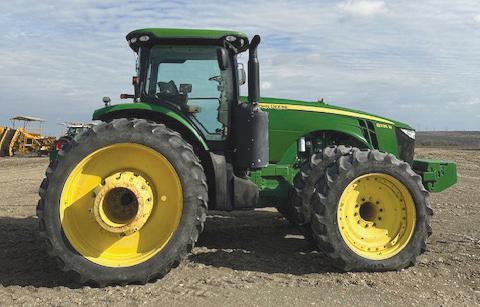










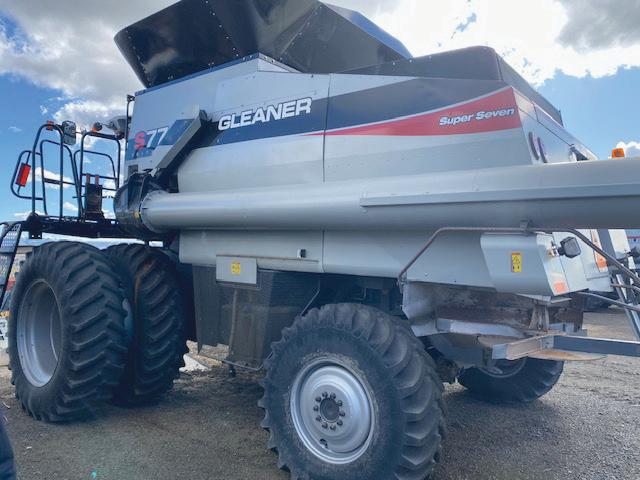
















4WD 150-HP & OVER UNDER 150-HP SKID STEERS


‘22 CASE IH PUMA 150, 473 Hours, Mechanical Cab Suspension, BlueTooth Radio, 2 Tele/Heat/Rem Adjustable Mirrors, ISOBUS Class 3 Speed Control, 200 Amp Alternator, 3 Electronic Rear Remotes ,(N.A.P.) $178,900
‘21 CASE IH MAXXUM 125, Deluxe Radio w/ Bluetooth, Telescoping Mirrors, Rotary Beacon, Call NezPerce $134,900
‘05 CASE IH JX1100U, 3300 Hours, LX Loader, Cab, 3pt, PTO, Skid Steer Style Hook Up, Shuttle Shift $38,500
‘18 NEW HOLLAND WORKMASTER 50, 535 Hrs, 4WD, 8.3x24 Fronts, 13.6x28 Rears, Loader, 2 Remotes, 1 Kickout, PTO, 3PT, 1500KG Lift Hitch, Parking Brake, Hyd Steering, 8x8 Synchro $37,500
‘16 NEW HOLLAND BOOMER 24, 252 Hours, 540PTO, 3PT, 4’ Tebben Mower, 7’ Kind Kitter Back Blade, Cons $16,900
‘15 NH BOOMER 33, 308 Hours, 4WD, Hydrostatic Transmission, Loader, R4 Tires, 72” Box Scraper, Consigned $19,900
‘83 FORD 5600, 2WD, 75HP, Loader, Rebuilt Motor and Hydraulic, New Pint, SS Quick Attach, Cons $34,900
‘79 VERSATILE 875, with 7900 Hours, Consigned $9,000
‘12 CASE IH FH400, Kile Points, 4-1/2” Packers, Call Moscow for More Info $29,900
Run Double Shoot, Light Bar, Amber Rotating Beacon, Bulk Tank Lights, Sectional Command, Rear Ladder w/Folding Steps, Rear Tow Hitch, Tank Fill Indicator, Tillage Mounted Work Switch $185,000
‘07 CROSS SLOT MARK IV, 30’ No Till Drill, 10”

‘07 FLEXI-COIL 4350, 6430 Bushels, Variable Dual Fan, 10” Auger, Velocity Sensors, 18.4x38 R1 Duals, Transport Lights $37,900

‘00 GP 4000/2220 Air Drill, 40’x 7.5”
Hyd Drive, 2x13 Packers, T-Handle Adjust, Ravin Hyd Motor Drives, Ravin Monitor & Antenna $26,900

‘22

‘16 CASE IH 4440, 4100 Hours, 120’ Boom, Accuboom


‘90 LORAL MAGNUM IV, truck mounted fertilizer applicator, Allison automatic trans., 2-speed gear box, single axle truck with fertilizer applicator on top $9,900




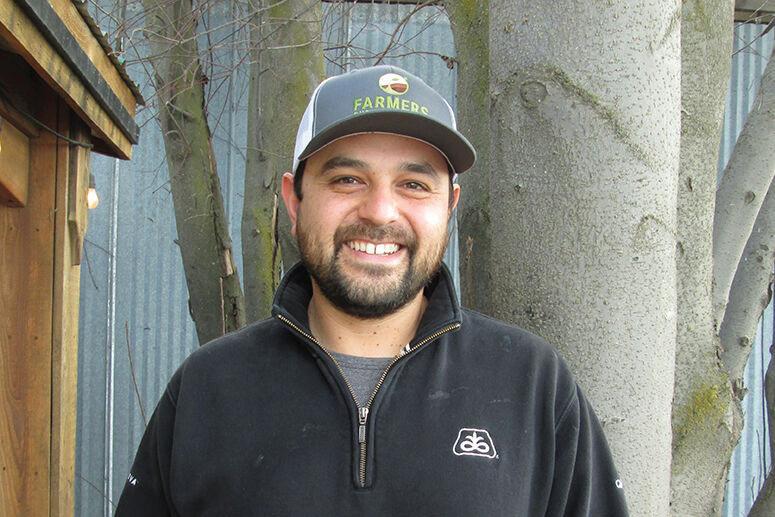
Drones catch on as aid to farming
By BRAD CARLSON Capital Press




Third-generation farmer and first-generation agronomist Michael Navarrete is quick to identify The Soil Doc’s fastest-growing segment.
“Drones, without a doubt,” he said. “The interest has skyrocketed since last season.”
Navarrete started his business in 2021 in the Idaho-Oregon border area. He offers crop consulting, turf care and dronebased application of chemicals and cover-crop seeds. He also grows and sells micro greens and sprouts, and farms 18 acres of field corn.
He works on weed and
insect control, and soil health, in a turf-care segment that he will grow as opportunity and capacity allow.
“I limited it because the drone segment is growing so fast,” Navarrete said.
Uses of drones
He can contract the use of the 8-gallon drone he owns at a cost based on acres or hours, depending on the crop.
Drone-related interest has been strong among growers of specialty and high-value crops, including onions and sugar beets, Navarrete said.
“We are not replacing big equipment,” he said. “But we have a fit.”
See Drones, Page B3

MICHAEL NAVARRETE
Michael Navarrete
Title: Owner and agronomist, The Soil Doc
Age: 34
Education: B.A., Spanish, B.S., biology, University of Portland; M.S., agronomy, Iowa State University
Hometown: Ontario, Ore.
Residence: Fruitland, Idaho
Family: Wife, Krista, three children
Hobbies: Bass guitar, coaching kids in sports

Drones
Continued from Page B2
Covering more ground faster is among the advantages, Navarrete said. Plus, a drone “can fit a space that never has been able to be reached until now, which is increasing farm yield overall.”
Drones also may be preferable to airplanes depending on proximity to housing, power lines or other non-agricultural structures, he said.
Application timing is another potential advantage for a drone, Navarrete said. For example, a farmer who uses gravity or furrow irrigation need not wait until the ground dries.
Recent wet springs — drones don’t compact soil — and remnants of Hurricane Hilary last August helped to boost demand, he said. The heavy late summer rain and high humidity meant fungicides were needed in amounts not normally seen during that time of year.
Swarm license
Eventually, Navarrete plans to apply for a license

to pilot multiple drones. The Federal Aviation Administration recently approved the practice, known as swarming.
The name of his business is a nod to soil health, he said.
“But at the end of the day, everything comes
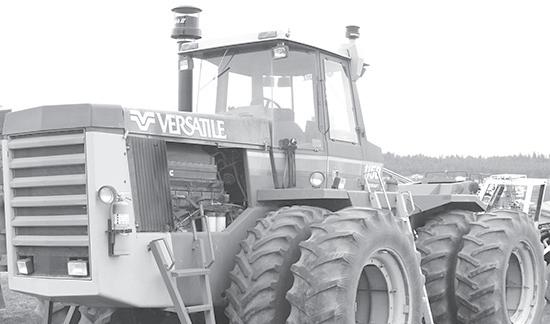
VERSATILE 1150, power shift, 5,900 hrs., diff. locks front & rear, KTA-1150, 525-hp., triples, 4 remotes $55,000
JD 8640, PTO, 3-point hitch, 4-remotes, new crank, rods & main bearings, Papé Machinery rework on engine, 8-heavy cast wheels, rack & pinion axles $18,500
JD 8630, 8100-hours, 3-remotes, PTO, 8-excellent 24.5x32 matching tires, 50 Series engine $15,500
JD 544, articulating loader $17,500
CASE 4890, 4-remotes, 4594-original hrs, tank optional, 30.5LRx32 radials inside, 24.5x32 bias outside $17,500
FEED/SEED TANK, mounted on semi-trailer, 5-compartment, retractable unloading leg $2,500
from the soil,” said Navarrete, who holds the Certified Crop Adviser designation.
Operating independently rather than as a major brand’s field agronomist or a university’s extension educator means he gives up some buying
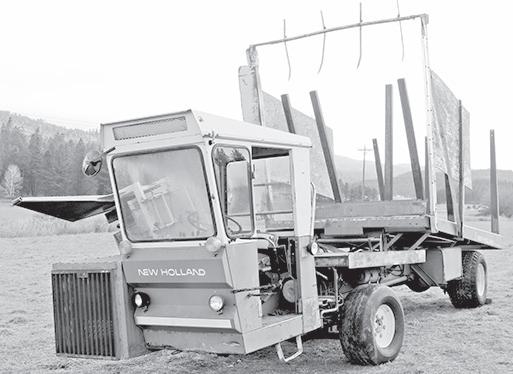
NH 1048, self-propelled bale wagon, auto trans. $6,500 NH 1046, self-propelled bale wagon, 6-cyl.
power, volume discounts and instant credibility.
Advantages include the opportunities to “see both sides of agriculture,” said Navarrete, who has been an employee of major seed companies in Illinois and Washington. As for reputation, “it takes time
to build that up, and it has taken time. The customer base I do have increased their level of yield because of my expertise.”
He and client growers assess goals, map them field by field and come up with a plan. The first step is a soil test.
“I’m product-agnostic,” Navarrete said.
His grandfather came to the U.S. from Mexico through the World War II-era Bracero program to do farm work, and later became a farm labor contractor and farm owner.
The operation now is about 2,800 acres divided among five families who farm separately.
“My first love had always been research,” Navarrete said.

LAMINATED WOOD BEAMS 24’ TO 40’ $25/ft.

$1,950 NH 595, 3x4 baler, Excellent! $12,700
KNEIB POP-UP HAY BALE LOADER, field ready. $1,250
BALE WAGON PARTS, auto & stick transmissions, rear ends, 460-V8, auto. transmission CALL HESSTON 4655, in-line style baler $12,500
ALLEN 8827, rake $5,500
JD, 12-wheel V-rake $4,750
HESSTON, StackMover trailer $1,100
HAY GRAPPLE, 3-big bales, 4-round bales, or many small bales, Cat telehandler mounts (can be changed) with 2 hydraulic cylinders $2,900/ea.
CASE IH, hay dry preserver applicator, ea $250
TILLAGE
HESSTON 54 CULTIVATOR, 5-section, walking beam axles, sweeps, hard faced $18,500
JD KILLIFER 15’ OFFSET DISK, $2,800 MORRIS, 19’ chisel plow, 2-section PARTS
COMBINES & PARTS
JD 6620 SIDEHILL, 1690 hrs., 220 header, pickup reeL $17,500
‘76 JD 6602, with 20’ header $2,500






 By MATTHEW WEAVER Capital Press
By MATTHEW WEAVER Capital Press
Several Northwest brands will establish a processing facility in Montana to develop organic, gluten-free grain products with a $3 million USDA Organic Market Development grant.

ZEGO Foods and Snacktivist Foods will use the funding to expand and improve the organic, gluten-free, high-protein grain supply chain.
Colleen Kavanagh
funding them so that they get up and going,” ZEGO Foods founder and CEO Colleen Kavanagh told the Capital Press. “If we didn’t have this infrastructure money, there’’d be no way — there’d be too much debt, we wouldn’t be able to do what we want to do.”



“It really makes sense for the government to be, not running these facilities, but
The money will be used to open new sales channels, develop three to five new organic specialty grain products and provide co-packing for “values-aligned” brands.
See Grain, Page B5
















Grain
Continued from Page B4
The grant will help the organic supply chain better serve more than 85 million people in the U.S. with medically tailored diets due to allergies, gluten intolerance or diabetes, and consumers seeking to reduce chemical exposure, according to the company.
They will promote oats and proso millet processed at the Montana Gluten Free facility in Belgrade, Mont. The facility is slated to be operational with updated equipment in about six months.
Anchor brands
ZEGO Foods makes “superfood-based” products that meet as many dietary restrictions as possible. It is based in San Francisco.
Snacktivist Foods develops vegan, gluten-free, non-GMO, whole grain baking mixes and baked foods, with an emphasis on regenerative agriculture. It is based in Coeur d’ Alene, Idaho.
The companies will be anchor brands in the Collaborative Integrated Value Chains (CIVC) co-op, working with small farmers and companies to process crops and sell them into retail and food service markets.
Working with farmers
The co-op hopes to work with 10 to 20 farmers in Montana, Idaho, Oregon and Washington.
“I know all too well how many farmers have speciality crops sitting in a bin or trailer because they needed to grow a rotational crop,” said Joni Kindwall-Moore, Snacktivist founder.
Kindwall-Moore is developing a database of growers looking for market channels for their specialty crops, as well as a database for value-added processing, including on-farm storage and cleaning.
Current production is about 1 million pounds. The goal is to reach an optimal size, about 12 million pounds, and then
‘A NEW FARMER TEXTED ME YESTERDAY AND SAID, “I HAVE 200,000 POUNDS OF PROSO MILLET, WOULD YOU LIKE IT?” I REGRETFULLY CAN’T HELP HIM BECAUSE I DON’T HAVE A WAY TO PROCESS THAT INTO HUMAN-GRADE CONSUMABLE PRODUCT.’Joni Kindwall-Moore, founder
replicate the project in other areas.
The co-op will operate on a limited, redistributive profit model, Kavanagh said. “We’re all working together to be as efficient as we can, so
we can get money to the farmers and keep the price down for the consumer.”
Millet dehulling
The project will add millet dehulling, which is not available in the region, Kavanagh said.



Currently, farmers must get their millet dehulled in Colorado.
Several farmers have organic millet sitting on their farm, but can’t sell it as a value-added product, Kavanagh said.
“We have all these people who have specialty diets ... it’s right here on the farm, and we can’t get it to them,” she said.
“A new farmer texted me yesterday and said, ‘I have 200,000 pounds of proso millet, would you like it?’” Kindwall-Moore said. “I regretfully can’t help him because I don’t have a way to process that into human-grade consumable product.”
See Organic, Page B6





Organic
Continued from Page B5
Helping smaller brands
The co-op model opens a supply chain so smaller brands can purchase U.S.grown organic oats, Kavanagh said.
Currently, most U.S.-grown organic oats are purchased by just a few large companies, so small brands end up sourcing from Canada or overseas, she said. They need 25-pound bags or single pallets, but larger mills have minimum orders of a half truckload or more.
FOODS
https://zegofoods.com/
SNACKTIVIST FOODS
https://snacktivistfoods.com/
“We will be working with Bay State Milling to supply those smaller brands at the quantities that work for their volume,” Kavanagh said.
The co-op will provide organic allergy-free or gluten-free copacking for small brands, which is extremely difficult to find for smaller brands, she added.
“These issues around developing supply chains for rotation crops to small brands is key because they can really help farmers move their regenerative and organic crops as they expand their acreage,” she said.
For more information, contact Kavanagh at colleen@zegofoods.com and Kindwall-Moore at joni@snacktivist. com.



FordF-450SuperDuty FlatBedwithpowerlift. Secondowner.Noaccident.Allrecords.New transmission.Liftgate, adjustable/movablerack bars,dualwheelback axel.FallRiverMillsor

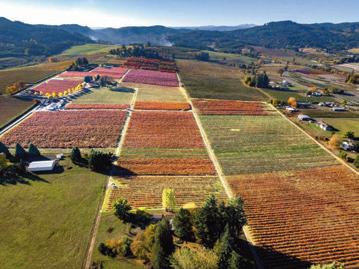

HayBuyer&Production/ InventoryManager
AndersonHay&Grainin Aurora,ORishiringfor twofull-timepositions! TheHayBuyerposition involvespurchasingtons, managinginventory,and workingcloselywithour operationsteamtomake surehaygetstoourfacilities.HayBuyersarealso expectedtomaintainand buildnewandcurrentrelationshipswithourgrowers.
TheProduction/Inventory Managerpositionisresponsibleforcoordinatingtheproductionscheduleandallproductionactivities,aswellas coordinatinglogisticsduringharvestmonths.
Formoreinformationand applicationspleasevisit www.anderson-hay.com/ careersorcontactHRat (509)866-0555.
AGRICULTUREFACILITIESOPERATIONS
MANAGER FeatherRiverCollege Quincy,CA
AGRICULTUREFACILITIESOPERATIONS
MANAGER
SalaryRange$67,640$85,520/Annually
UndergeneralsupervisionoftheChiefInstructionalOfficer,andincoordinationwiththeAgricultureDepartmentChair, plans,implements,and facilitatestheday-to-day instructionalprogramoperationsoftheAgriculture Department.IncoordinationwiththeFacilitiesDirector,maintainsand overseestheagricultural facilitiesastheysupport thevariousAgriculture Departmentprograms, curriculum:courses,activities,events,including butnotlimitedtolivestock care,forageproduction, equipmentmaintenance andrepair.Otherduties includefacilitatingclassroomandlabinstruction, operationofagricultural equipment,andsupervisionofandinteraction withstudentsparticipatinginvariousday-to-day operationsaswellasthe studentemployees.Performrelateddutiesasassigned.
DISTINGUISHING
CHARACTERISTICS: Thispositioncouldhave avariable/flexiblework schedulefromtimeto timeitmayrequireworkingsomenightsand/or weekendssome overnighttravelthroughouttheyear.Thispositionisgrant-funded,futureemploymentissubjecttograntfunding.
Toapply,pleasegoto https://frc.peopleadmin.c om/postings/1162
Positionopenuntilfilled. Firstreviewdate4/15/ 2024
Foradditionalinformation pleasevisitusat www.frc.eduorcall 530-283-0202ext.257.
667 Loans & Financing
716 Hay, Straw, Forage
Corn Silage $80/ ton out of pit. Delivery Available. Scio, OR 503-930-2738 Certified
165-230 RFV Alfalfa.
2-tieOrchardGrass: 90lbs.1stcutting.$250/ ton.Norainorweeds. Tarped.Pasco,WA.Call/ text509-531-3717
719 Feed, Grain

GreatPyreneesLGD 6-month-oldfemalePups
Sixavailablewormed/ shots/microchipped/ $700.Monmouth,OR. 503-983-6983;Alpaca Farm www.elysianhill.com

BorderColliePups:13 weeksold,1male,1female.Outofprovenworkingdogsandguaranteed towork.Bothparents worksheep,goats,and cattle.Medium-longcoat, blackandwhite.Sisters, OR.541-306-8759; awbrey.marie@gmail.co m
746 Goats

BOERXGOATSW/ KIDS(CLOSEDHERD DISPERSAL)
WVMCattle.com
April11,2024Sale Completedispersalof RanchRaisedCommercialBoerXgoatherdin Idaho.
Thisisa"closed,"healthy herdfor18years,high percentageBoer,allone family
Approximately150two (2)yearolds
758 Cattle Beef
RegisteredAngusBull #20335986 Readytowork,goodsolid feet,ImageMaker,SAV BrillianceRainier,OR. 503-308-3635
YearlingAngusBulls:2 yearlingBlackAngus bulls.Unregisteredpurebred.40Years-samelocation,Clarkes-4-Corners.$1600each. Beavercreek,OR.503632-6873

RegisteredAngusBull:4/ 28/2021AIsired.Calving ease,-1.5bwepd.Calm tempered&easytowork with.Asking$5000.PowellButte,OR. 541-990-0031

RegisteredWagyuBull: FB93749.Foundation Genetics,Greatdisposition,UTDonvaccines, Herdreductionothercattleavailable.Rochester, WA.360-789-2255

REGISTEREDSHORTHORNBULLS 1-2YEAROLDAND4YEARLINGBULLS. SEMENTESTEDAND VACCINATED.CALLOR TEXT GARRY PRINEVILLE,OR,541788-1622BAMAPAT5@ YAHOO.COM
828 Misc. for Sale or Trade

14'NorthwestTillers: PTOpowered,beltdriven.Rearroller.Newer teeththroughoutwithnew drivebeltsononeside. Deliveryavailable. $8,400OBO.Vancouver, WA.360-831-2078
840 Miscellaneous
1stCuttingOrchardgrass barnstoredexcellent qualityasking$15.00 eachapproximately7000 bales.Paragonah,UT, 435-590-5446 judd03@icloud.com

HYDRAULICSQUEEZE CHUTE:TARTERWEST SERIES12CATTLEHYDRAULICSQUEEZE CHUTE,$14,250.Crane, OR.541-589-0752
911 Hay Equipment
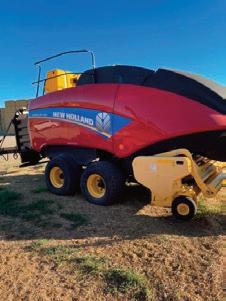
New Holland Big Bailer
920 Tractors
JohnDeere4450:15 speedpowershift,Good rubber,Duals,6,736 hours,Quickhitch,Very Clean,FWD,Quickhitch. $48,500OBO.Auburn, WA.253-939-7666; FARMOFFICE@MOSBY FARM.COM
Frontier12ftoffsettowabledisc:Frontier5112
Disc.12ftoffsetdisclike newcondition.Chehalis, WA.360-266-8402
869 Livestock Equipment & Supplies
887 Irrigation Equipment
WheelLinesForSale: WadeRain&Western Callforpics.Mitchell,OR. 541-462-3062; petecass53@gmail.com
899 Heavy & Industrial Equipment

Excavatorcaterpiliar336: 2021Caterpillar336excavator,Deluxecab,rear andrightsidecamera, GPSwired,12'10"stick, 21'4"boomreach,Cat thumb&48"bucket. Breakernotincluded. Redmond,OR. 541-706-0280; johng@yorkbros.com
907 Nursery Equipment & Supplies

911 Hay Equipment
716
Approximately350three (3)-six(6)yearolds MajorityofDoesare packingtwins,afew tripletsandsomesingles Majorityofkidswereborn January10-March15, 2024 Goatswillbesoldas pairs Formoreinformation, text/callMarianne. WhiteBird,ID, 509-770-0660 miriam@canyonnatives .com
30FootWeedWiper:HydraulicPoweredCarpet RollerswithHeightAdjustment.Gaspowered enginetorunhydraulics.
New Holland Big Bailer 340 with a Bail count of 16819. No known mechanical issues and ready for 1st cut. Fort Bidwell, CA. 530-526-7609; Raym@outback-inc.com
New Holland Big Bailer New Holland Big Bailer 340 with a Bail count of 16819. No known mechanical issues and ready for 1st cut. Fort Bidwell, CA. 530-526-7609; Raym@outback-inc.com

2011 Hesston Round Baler 2856A: made 8900 bales, stored indoors, $19,900. Burns, OR. 541-589-2360; annbill7477@gmail.com

2002HayHogSqueeze DetroitSeries50motorrunsbutusesoiland needsrebuilt.Allisonautomatictransmission,3 stageSuperiormast. GoodinteriorwithA/C andheat.Tangent,OR. 541-974-2459 2015MasseyFerguson 8727

Clean,freshlyserviced andfieldready.240hp engine/205hpPTO. 3,235hours.CallDavid formoreinformation,ifno answerleaveavoicemail. Tangent,OR.541-9795492
917 Orchard/Vineyard Equipment
Macro Plastic Fruit Bins: 4ftx4ftx30in tall. Truckload minimum 40 bins. Silver Lake, OR. Call 541-4803371
Compost Spreader and Misc. Equipment: Millcreek 50 compost spreader, $2500. Whatcom Mfg Model 650 compost spreader, hydraulic drive, double axle, front dual conveyor discharge, $12,500. Econoline 9T 3 axle tilt deck trailer, $3500. Rears 100 gal Pak-Blast, like new, $3500. Orchard Extenday applicator, $2500. (2) Blueline work platforms, $2000 each.
DUAL model 115 front end loader, $2000. 1000 gal propane tank with pump on trailer, $5000. 3000 gal propane tank, $7500. Wonder Weeder cultivator, $3500. Rinieri front mount cultivator, $3000. Weed Badger, $1000. Grandview, WA. 509-8401453; ARCHIEDH@ BENTONREA.COM
920 Tractors
JohnDeere4440:8 SPEEDPOWERSHIFT, 7461HOURS,QUICK HITCH,DUALS,CLEAN, HYDFWD.$43,500 OBO.Auburn,WA. 253-939-7666; FARMOFFICE@MOSBY FARM.COM

CustombuiltbyHeavy HarrowEquipmentMftg. Independence,OR. 503-586-4564; heavyharrow@live.com
C&M4RowTrans-
planter:Dualgold4row vegetabletransplanter. Plantedlessthan15 acres.Nolongerneeded. Newin2019,Always Shedded,LikeNew, $22,500OBO.Auburn, WA.253-405-2759; FARMOFFICE@MOSBY FARM.COM
TractorandEquipment forsale:JohnDeere 5105MLwith563Loader, BucketandForks $40,000.10'Brillion Roller$12,000.Gandy Seederthatcanbolton topofBrillion,$3200.6' MaschioTiller$2800.


JohnDeere4230:Power shifttransmission,258 Quik-TatchFarmHand loaderandbucket, 13,000hoursonoriginal engine,runsandstarts good,radio,heater,AC needscharged.50%rubber,2WDwithlargefront tires.$16,500.Seneca, OR.541-542-2558; jackandteresa@southwo rthbros.com
923 Farm Equipment
Tractor: KubotaM9000withloader,430hrs.Oneowner, excellentcondition. $25,000OBO.Yreka, CA,530-340-1438; dennisjfitz901@gmail.co m
Pay in cash. Athol, ID BILL (208) 651-8698

JohnDeere900Vripper $1700.Gervais,OR. 503-393-1689 Parker bankout wagon. 1100 bushel. $34,000.
4 wheels and tires off John Deere self propelled sprayer. 620 R46. 50% tread. $6000 OBO.
4 wheels and tires off John Deere sprayer. 50% tread. Firestone. 380 105 R50. $6000 OBO.
3 Roads Equipment and Consignment LLC. Walla Walla, WA. 509-876-1590

790NewHollandSilage ChopperwithMetalAlert: BoughtnewatBrimin ChehalisWA.Usedonce in2010.Keptinsideand undercoversince2010. Boughtadditionalmetal alertfor5k.Asking21k
790NewHollandSilage ChopperwithMetalAlert: BoughtnewatBrimin ChehalisWA.Usedonce in2010.Keptinsideand undercoversince2010. Boughtadditionalmetal alertfor5k.Asking21k forChopper.Randle,WA. 360-304-9187; roxycupp@gmail.com

tractor mounting brackets, loader frames only. Auburn, WA 253405-2759

NewHollandTractor T4.75:2014NewHolland T4.75.512hrs,75HP,4 rearremotes.Frontend LoaderwithBucket. PowerShuttleTransmission.4WheelDrive,excellentShape.Fullcab withheat,air,stereo,air seat.Terrebonne,OR. 541-604-5448;rich@coy


Cherry season officially a disaster in Washington and Oregon
By KYLE ODEGARD Capital PressThe USDA has issued a weather-related disaster declaration making sweet cherry growers in Washington eligible for up to $500,000 in federal loans.
The development, announced March 19, comes shortly after a disaster declaration for Oregon’s sweet cherry industry.
A USDA disaster designation will allow growers to access low interest emergency loans to help bridge operations into the 2024 season.
“Many growers who lost cherry income last year are worried about having operating capital this year as the losses may have affected their ability to get an operating loan. The emergency loans will help address this for some growers,” said Tim Kovis, director of

















Cherries
Continued from Page B8
communications and events for the Washington State Tree Fruit Association.
The disaster declaration will also be a factor in congressional deliberations on whether to provide additional financial assistance, according to a statement from the Northwest Horticultural Council.
“In addition, a declared disaster opens the possibility of Congress potentially providing additional aid,” Kovis added, in an email exchange.
Brianna Shales, marketing director for Stemilt Growers, a large Washington-based producer, said it’s too early to know what the 2024 cherry crop will look like, as trees haven’t yet bloomed.
She said she wouldn’t anticipate a large crop like the past season because of natural fluctuations for the trees. “We also had multiple days of below zero degrees that appear to have damaged buds,” Shales said.
California’s late cherry harvest
Oregon and Washington’s disaster declarations address weather-related losses, including unseasonably high temperatures that led to a condensed season.
But cherry growers also faced a terrible year due to California’s late harvest. Hard rains pushed California’s cherry crop back, coinciding with the Pacific Northwest’s season.
Despite high quality fruit, prices tanked due to oversupply, and many Northwest growers left their crop unharvested.
See Fruit, Page B10




Genesee, ID (208) 285-1729
Tensed, ID (509) 290-1962
Chambers, WA (509) 334-4632
Fairfield, WA (509) 283-2333
Fallon, WA (509) 878-8202
Garfield, WA (509) 635-1227
Oakesdale, WA (509) 285-5516
Rosalia, WA (509) 523-3511
Steptoe, WA (509) 397-4664











This is the third year in a row that many cherry farmers faced major weather challenges.
Continued from Page B9
Disaster announcements
The announcement of Washington’s disaster declaration came from U.S. Sens. Maria Cantwell and Patty Murray, along with U.S. Rep Kim Schrier.









“Through no fault of their own, our cherry growers experienced immense challenges and economic losses last season, with data showing growers experienced losses of more than 50%,” Schrier said, in a news release.
Oregon Gov. Tina Kotek,
who asked for a disaster declaration for her state in September, said in a March 1 news release that harvest data showed a 35% loss due to poor fruit set.
Oregon’s disaster declaration includes areas impacted by excessive rain starting on July 7 and drought, excessive heat and high winds July 5-15.
This was the third year in a row that many cherry farmers faced major weather challenges.
In 2021, extreme heat hit the Northwest in June, causing early-season varieties to cook on the tree.
In 2022, an untimely April snowstorm blan-
keted orchards, disrupting pollination.
Sweet cherry background
Fresh sweet cherries typically have a value of more than $1 billion. Washington is the nation’s top sweet cherry producer, followed by California and Oregon, according to the USDA.
Washington and Oregon combine to produce about 73% of the nation’s sweet cherries and 75% of exports, according to the Northwest Horticultural Council. The sweet cherry industries in those states typically employ about 20,000 people.
Simpson boosts funding for CAFE research dairy
By CAROL RYAN DUMAS Capital PressThe University of Idaho Center for Agriculture, Food and Environment got a boost on Tuesday when U.S. Rep. Mike Simpson secured $2 million for the project.

University of Idaho
Proposed facilities for the Idaho CAFE research dairy north of Rupert.

When completed, the $45 million project will be the nation’s largest research dairy and will have many other components to foster scientific research, agricultural sustainability and consumer education.
Simpson secured the money through Community Project Funding in the Fiscal Year 2024 Agriculture, Rural Development Food and Drug Administration, and Related Agencies Appropriations Bill.
“Throughout my time in Congress, I have proudly worked to ensure that Idaho’s agriculture can continue to thrive in the future,” the Republican said in a press release.
“The CAFE Research Dairy will increase the sustainability and efficiency of Idaho’s agriculture, grow Idaho’s economy and explore how to make the dairy industry even more productive,” he said.
Environmental pressure
Idaho’s dairy industry, a cornerstone of the state’s agricultural success, is facing increasing pressure to reduce greenhouse gas emissions and adopt emerging technologies that promote longterm environmental and economic sustainability,
See CAFE, Page B12


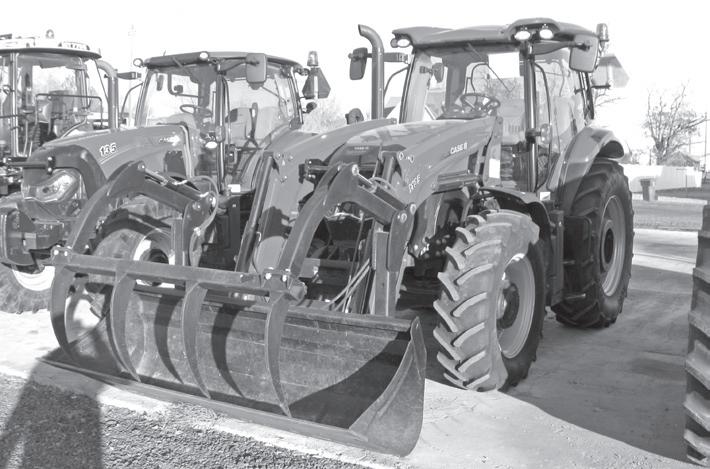




1992 INTERNATIONAL CRANE TRUCK, 10 ton lift capacity, 45’ reach, upper bucket controls, 18” auger, 240hp DTA466, 8ll trans, 14’ service body, 90% 11r22.5’s, aux. hydraulics, runs and drives great
1995 FORD F800
CAB DUMP, 22K gvw, 210hp 5.9 Cummins, 5spd & 2spd, locker, AC, PS, PB, 4yd box, hitch & brake control, 98K miles, new 10r22.5 tires
1980 INTERNATIONAL SERVICE TRUCK, 210hp DT466, 5&2 spd., AB, PS, IMT 425AT knuckle boom with remote, hydraulic outriggers, 13hp Curtis 25CFM compressor, 70% 11r22.5 tires, 12’ service body
1998 GEHL DL6H40 4X4 TELEHANDLER, 7,000lb lift capacity, 40’ lift height, enclosed cab w/ heat, 3 way steering, 5200hrs, 4.5 John Deere diesel, 80% 13.00x24 tires, 60” forks, runs and works great
1998 INTERNATIONAL 10YD DUMP, 370hp M11 Cummins, Jake, 18spd, 18K front, 40K rears on hendrickson, 90% 22.5 tires, live hydraulics, dbl frame, pintle, 250K miles, runs and drives great
1988 KENWORTH T800 TRACTOR, 350hp BC IV Cummins, Jake, 18spd, Ac, PS, 50% 295-22.5’s on aluminum, air ride, air slide 5th, maintenance records, 180” w.b., runs and drives good
1998 FREIGHTLINER FL70 4X4 LUBE SERVICE TRUCK, 126K miles, 26K GVW, Reman 275hp 3126 Cat Diesel, Md3060 Allison AT, AC, PS, AB, cruise, 14’ enclosed body oil tank, 4 product tanks, hyd. compressor, work bench, air greaser, 6 hose reels, 90% 11r22.5’s, 90% brakes, runs and drives great
1998 CATERPILLAR
TH103 TELEHANDLER, 10,000lb lift capacity, 44’ lift height, outriggers,4x4, 3 way steering, 48” forks, 75% 14.00x24 tires, 9100hrs, runs and works excellent
1997 FORD WATER TRUCK, reman 210hp 5.9 cummins, 6spd.









4x4, 40’ lift height, 4BT Cummins, 7100hrs, outriggers, 10K capacity, 60% 14.00x24 tires, runs and works great
1991 AUTOCAR
12YD DUMP, 425hp Cat 3406B, 18spd, Jake, lift axle, full lockers, 15.5’ box, 60% 11r24.5’s, 700k miles, pintle hitch, air gate, Runs drives great



123RF
Idaho’s dairy industry, a cornerstone of the state’s agricultural success, is facing increasing pressure to reduce greenhouse gas emissions
CAFE
Continued from Page B11
Michael P. Parrella, dean of the University of Idaho’s College of Agricultural and Life Sciences, said.
“Thanks to Congressman Simpson’s advocacy and investment in our research infrastructure at what will soon be the nation’s largest research dairy, we are poised to help ensure Idaho dairy continues to be a global leader in solving issues of critical importance through research-based solutions,” he said.
Idaho’s dairy industry is a leader in pioneering new technologies, and the CAFE site will provide opportunity to continue to develop and test new manure technologies, Rick Naerebout, CEO of Idaho Dairymen’s Association, said.
Cutting edge
“We have long enjoyed great partnerships with both University of Idaho and USDA ARS in executing cutting edge science around all aspects of dairy production, and this investment would provide for the dairy industry to further those efforts,” he said.
Idaho’s dairy industry greatly appreciates Simpson, his understanding of the dairy industry needs and his work to meet those needs on a continual basis, he said.
The 2,000-head research dairy is on 640 acres north of Rupert. The university plans to begin milking cows at the dairy toward the end of 2024, with the dairy fully operational from a research perspective by 2026.
CAFE is led by the University of Idaho, with USDA’s ARS Kimberly scientists heavily involved in the design of the dairy to address the sustainability of agriculture.



Submit upcoming ag-related events on www.capitalpress.com or by email to newsroom@capitalpress.com. All times re ect the local time zone unless otherwise noted.
WEDNESDAY APRIL 10
Douglas County Livestock Association Spring Livestock Conference & Expo: 10 a.m.-8 p.m. Douglas County Fairgrounds, 2110 Frear St., Roseburg, Ore. Speakers on several livestock subjects for cattle, sheep, goat and horse owners. Keynote speaker is Tanner King, sales manager of Neogen Feedlot: “Feedlot Update and Futures.” Members $10; non-members $25. Includes tri-tip dinner. Information: Dr. Scott Hendy, 541-430-7224 or www.dclivestock.org.
SATURDAY APRIL 13
Forest Weed Management Field Day: 9 a.m.-3 p.m. Hopkins Demonstration Forest, 16750 S. Brockway Road, Oregon City, Ore. Weed control is often the key to success or failure in establishing trees and maintaining tree growth. This eld day will cover principles and practices of vegetation management for establishing and maintaining trees in forestry and forest restoration. Key topics include vegetation management with herbicides, nonchemical methods, and integrated pest management approaches for selecting and combining methods. There is no fee, but registration is required. For more information and registration, call OSU Extension Service at 503-655-8631 or register online at https://beav.es/cWK.
SATURDAY APRIL 20
Working Lands, Open Space Symposium: 9:30 a.m.noon. Kootenai County Fairgrounds, 4056 N. Government Way, Coeur d’Alene, Idaho. Presentations to focus on opportunities to preserve agricultural and timber lands, open space and the aquifer, including through agriculture uses. Speakers from American Farmland Trust, Idaho Farm Bureau Federation, Idaho Cattle Association and USDA Wildlife Services are scheduled. Elected o cials, agriculture organizations and members of the public are encouraged to attend. Presented by Kootenai-Shosone County Farm Bureau and Kootenai-Shoshone Soil & Water Conservation District in cooperation with Agriculture Sustaining Aquifer Protection. Information: weldit1959@gmail.com
See Happenings, Page B14



Grangeville: (208) 983-1730
118 West South St., Grangeville, ID 83530
Nez Perce: (208) 937-2402 311 Oak St, Nez Perce, ID 83543
Web: www.belleq.com is currently being rebuilt. Call for price and inventory updates.








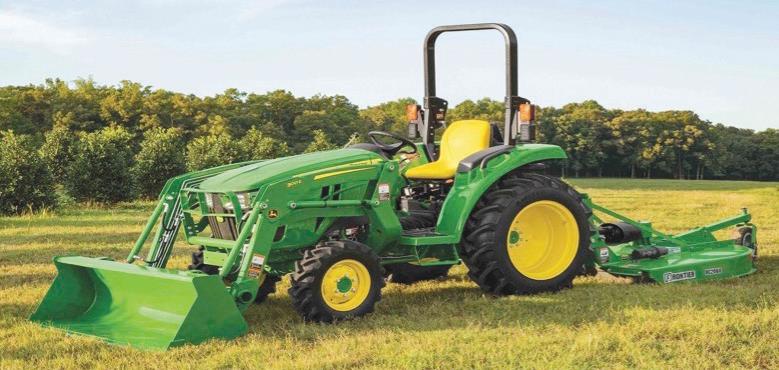


YOUR GUIDANCE PROFESSIONALS:


Jody Boyd
Jody Boyd
509-288-4581
509-288-4581

Steve Dixon
Steve Dixon
509-956-3108
509-956-3108


Dusty Eddy
Dusty Eddy


Lane Stephens
Lane Stephens
541-993-3202


Charlie Gibson
Charlie Gibson
541-298-6277
541-298-6277
Professional Services Manager, Certified Crop Advisor
541-705-5610
541-705-5610



JONES TRUCK & IMPLEMENT
JONES
Happenings
Continued from Page B13
SATURDAY-SUNDAY APRIL 27-28
Oregon Ag Fest: 8:30 a.m.-5 p.m. Saturday, 10 a.m.-5 p.m. Sunday. Oregon State Fair and Expo Center, 2330 17th St. NE, Salem, Ore. Ag Country is the heart and soul of Ag Fest, with more than 25 hands-on activities for the kids. Add a petting zoo, llama show, pony rides, tractor races and a craft and garden show for day of fun and education. Children 15 and under are free. Go to your local Wilco store to buy discounted tickets. Website: http://oragfest.com
WEDNESDAY-THURSDAY MAY 1-2
Western Food Safety Conference 2024: Hartnell College, Salinas, Calif. The two-day conference provides information on produce safety, research and regulatory development. Website: https://tinyurl.com/4sa24vkx
WEDNESDAY-THURSDAY MAY 8-9
Animal Agriculture Alliance 2024 Stakeholder Summit: Intercontinental at the Plaza Hotel, Kansas City, Mo. The summit brings together each link of the food supply chain to discuss emerging issues and advance animal agriculture. Website: http://tinyurl.com/ya53txh6
SATURDAY-MONDAY MAY 11-13
& IMPLEMENT








93rd Washington FFA Convention and Expo: Three Rivers Convention Center, 7016 W Grandridge Blvd., Kennewick, Wash. Approximately 2,000 FFA members and guests from across the state will gather to learn about careers in the agriculture industry, compete in state Career and Leadership Development Events, and shape the future of the Washington FFA Association. Website: https://washington a. org/93rd-convention
MONDAY-THURSDAY MAY 20-23
Ag Transportation Coalition Meeting: Greater Tacoma Convention Center, Tacoma, Wash. The event features speakers, panels and networking. Website: www.agtrans.org
TUESDAY-WEDNESDAY MAY 21-22
State of the Science Summit — Reducing Methane from Animal Agriculture: ARC Ballroom University of California-Davis. The summit will feature leading experts in methane mitigation and animal science. Website: https:// tinyurl.com/mvth36th
MONDAY-WEDNESDAY JUNE 10-12
Western Governors Association Annual Meeting: Olympic Valley, Calif. The 2024 Annual Meeting will feature the Western Governors and their special guests in public conversations about the most signi cant issues facing the region. Website: https://westgov.org/
THURSDAY-FRIDAY JUNE 13-14
Western Ag & Environmental Law Conference: University of Nevada-Reno. Presented by the National Agricultural Law Center, the conference will present agricultural and environmental research and information. Website: https:// nationalaglawcenter.org/western2024/
MONDAY-THURSDAY JUNE 17-20
International Society for Agricultural Safety and Health Annual Conference: Hilton Portland Downtown, Portland, Ore. The conference features educational sessions, networking and tours. Website: https://isash.org/
WEDNESDAY-FRIDAY JUNE 19-21
R-CALF Convention and Trade Show: The Lodge at Deadwood, S.D. The event focuses on hot-button topics in the cattle industry. Website: www.r-calfusa.com/event/ annual-convention/
MONDAY-WEDNESDAY JULY 8-10
Solar Farm Summit, North America’s Agrivoltaics Expo: Loews Chicago O’Hare Hotel, Rosemont, Ill. Sponsored by American Farmland Trust, the conference focuses on solar projects that combine active farming with energy generation. Website: https://solarfarmsummit.com/
USDA seeks partnerships for conservation on grazing lands
USDA is investing up to $22 million in partnerships that expand access to conservation technical assistance for livestock producers and increase the use of conservation practices on grazing lands.
USDA’s Natural Resources Conservation Service is accepting proposals through its Grazing Lands Conservation Initiative until May 26.
“Privately owned grazing lands cover nearly 30% of the national landscape, which means we have a tremendous opportunity to address climate change and conserve natural resources through voluntary, private lands conservation,” Terry Cosby, NRCS chief, said in a press release.
“NRCS enlists a wide variety of conservation practices to help livestock producers. These partnerships will also help us expand the footprint of conservation on grazing lands and could help better reach underserved producers,” he said.




BALERS LARGE SQUARE

GRANDE, OR (541) 963-8144
• ALBANY, OR (541) 757-8112 More to come www.sseqinc.com
SWATHERS

(31) NH BB340SPLUS 3x4 BALERS IN STOCK!! Some Single Axles, lots of Tandem Axles, Several Different Packages, Most with LoopMaster Knotters, Price Points From $79,900 to $134,000!!
NH BB9080, 2012, 18,723 bales, single axle $49,900 -$44,900
NH BB9080R, 2009, Rotocut, tandem axle, 67,000 bales, bale chamber extensio $29,900- $22,900
Case IH LB434XL, 2019, 21,779 bales, large tandem axles $84,900 $74,900
Case IH LB434XL, 2019, 29,126 bales, single axle $65,900 $59,900
Case IH LB434XL, 2019, 29,126 bales, single axle $65,900 $59,900 Claas 5300, 2019, 35,000 bales, rotocut, tandem axles, hyd Brakes $69,000 $59,000
(2) MF 2234XD’s, 2023, Large Tandems, 5,003 & 5,059 bales, new monitors $175,000 ea.
(2) MF 2270’s, 2015’s, 29,272 & 28,883 bales, clean, stored indoors $81,000 ea.
MF 2270, 2021, 17,283 bales, tandem axle, crop preservative kit $135,000
(2) MF 2170’s, 2012’s, 49,000 bales, single axle, roller chute $59,900 ea. BALERS – ROUND
NH BR780A, 2007, extremely good condition, extra parts, twine wrap $22,900
MF 2270, 2020, 19,868 bales, tandem axle, crop preservative kit $130,000
(2) MF 2270’s, 2015’s, 29,272 & 28,883 bales, clean, stored indoors $81,000 ea.
NH BR7060, 2011, more details coming $24,000
NH 450U, 2021, less than 100 bales, like new!! $28,000 BALERS – SMALL SQUARE
(2) MF 2170’s, 2012’s, 49,000 bales, single axle, roller chute $59,900 ea.
BALERS – ROUND
NH BC5080, 2016 commercial 16x18 $25,500 -$22,500
NH BR780A, 2007, extremely good condition, extra parts, twine wrap $22,900
NH BC5080, 2016, commercial 16x18, new knotters, new floor $29,000
NH 450U, 2021, less than 100 bales, like new!! $28,000
NH BC5070, 2016, commercial 14x18, more details coming $21,700
BALERS – SMALL SQUARE
NH 580, 2007, commercial 16 x 18 $12,000
NH BC5080, 2016 commercial 16x18 $25,500 -$22,500
NH BC5080, 2016, commercial 16x18, new knotters, new floor $29,000
NH BC5070, 2016, commercial 14x18, more details coming $21,700
Freeman 370 engine baler $15,000 Freeman 330 engine baler $11,000 BALE WAGONS / STACKERS
NH 580, 2007, commercial 16 x 18 $12,000
NH BW28, 2004, 4,313 hours, super singles $89,000
NH 1075, diesel, meter shows 1,154 hours, freshly serviced, 2-tie kit $34,900 RAKES
Freeman 370 engine baler $15,000
(7) NH 216’s, $6,900 to $17,900
Freeman 330 engine baler $11,000 BALE WAGONS / STACKERS
Allen 8827, cable controls $9,900 $7,500 LMC 8603 wheel
Pro-Ag Bale Titan, 2019, great shape $109,000 RAKES
(7) NH 216’s, $6,900 to $17,900
ea. TILLAGE/SPRAYERS/MISC.
NH SP410F, 2019, 1,230 hours, 120’ booms, lots more $360,000 Wishek 812N-18 disk w/ cage roller packer, 28”, scrapers, great shape $45,000 Krause 5817W 16’ offset disk, scrapers $30,000 Turbomist SP30, 400 gallon tank, turbo steer $7,200 CONSTRUCTION
NH C238 track loader, 2017, cab, heat, A/C, high flow, only 668 hours $62,900
NH SPEEDROWER 260, 2022, 500 hours, 2 speed, standard cab, 416 Plus header $178,000
NH SPEEDROWER 260, 2019, 642 hours, 2 speed, deluxe cab, 416 header w/ “plus” upgrades $149,000 NH SPEEDROWER 260, 2019, 679 hours, 2 speed, deluxe cab, 416 header w/ “plus”
NH SPEEDROWER 260, 2019, 577 hours, 3 speed, deluxe cab, 416 header w/ “plus”






Grazing
Continued from Page B15
Project proposals for GLCI cooperative agreements will identify and address barriers to accessing grazing assistance for producers.
Criteria
Projects must address one or more of the following priorities:
• Local natural resource concerns.
• Climate-smart agriculture and forestry practices and principles.
• Encourage existing and new partnerships through emphasizing equity in advancing the resource needs of underserved communities.
• Identify and implement strategies to quantify, monitor, report on and verify conservation benefits associated with grazing management systems.
• Nonprofit organizations having a 501©(3) status with the Internal Revenue Service (IRS) (other than institutions of higher education)• Farmer or rancher organizations.
• State and local conservation governmental agencies.
• Agricultural extension services.
• Native American Tribal governments (federally recognized).
·•Native American Tribal organizations (other than federally recognized Tribal governments).
• Land grant universities, Hispanic-serving institution or other minority-serving institution.
For more information and to apply, visit the funding opportunity on grants.gov.
• Utilize indigenous traditional ecological knowledge, where applicable. Eligibility is limited to single individuals or the following entity types based in any of the 50 states, the District of Columbia, the Caribbean area and the Pacific islands area.
























The price per pound and production value were down in the Northwest, California and the U.S.
NW honey production and prices drop in 2023
By KYLE ODEGARD Capital PressThe Pacific Northwest’s honey production dropped 4% in 2023 compared to the previous year, but California’s honey harvest increased 17%, according to USDA reports.
The price per pound and production value were down in the Northwest, California and the U.S.
Tim Hiatt, a board member for the Washington State Beekeepers Association, said low prices resulted from an influx of foreign honey, fueled by low tariffs.
“Beekeepers for years have been getting destroyed by imports. … Guys are importing honey from Asia mainly, and South America. That honey is of really low quality,” Hiatt said.
Joe Maresh, Oregon State Bee-
keepers Association president, said Midwestern and Plains states also bounced back after a tough 2022, resulting in a domestic overabundance.
Northwest honey production dipped in part because farmers searching for value turned to crops that aren’t honey friendly, such as corn, which doesn’t need pollination by bees, Hiatt said.
“Alfalfa seed is not in favor as
much anymore, and that was a great honey plant,” he added.
Hive losses remain high in general and beekeepers are dividing hives to keep numbers up, which can weaken them, Hiatt said.
Beekeepers nationwide make roughly 82% of their income from pollination services, according to the USDA. Maresh guessed the
See Honey, Page C3






Honey
Continued from Page C2
Northwest average was roughly 75%.
Bees are returning from California almond orchards in decent shape as they prepare to pollinate Northwest tree fruit, Hiatt said.
California
The top honey producer on the West Coast in 2023 was California, with 13.6 million pounds, roughly 10% of national production.
California’s honey harvest was worth $30.1 million, down 1% from 2022. Price per pound dropped from $2.69 to $2.27.
Colonies increased to 324,000 in 2023, up 6%, and yield per colony was 42 pounds, up 11%.






































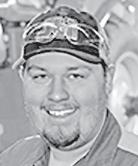





Bees
Continued from Page C3 123RF Bee olonies dropped 6% to 2.67 million in the U.S., though yield per colony rose 17% to 55 pounds.
Oregon
The Beaver State produced 3.3 million pounds of honey, down 2% from 2022.
Production value declined 19% to $9 million as the price per pound dipped from $3.27 to $2.71.
Colonies decreased 2% to 90,000 and yield per colony was unchanged at 37 pounds.
Idaho
Idaho was the only state in the Northwest with a larger crop compared to the previous year, but beekeepers were hampered by a low price point.





The state produced 2.9 million pounds of honey, an increase of 8%.
The price per pound cratered from $2.73 to $1.63, resulting in a production value of $4.8 million, down 36%.
Colonies decreased 2% to 92,000 and yield per colony increased 10% to 32 pounds.
Washington
Washington’s honey production hit 2.2 million pounds, a drop of 19% from 2022.
Price per pound dropped from $3.18 to $2.71, forcing the crop’s value down 31% to $6.1 million.
Colonies dipped 3% to 83,000 and the yield per colony dropped 16% to 27 pounds.
United States
U.S. honey production jumped 11% to 138.6 million pounds in 2023.
The harvest was worth $349 million, down 7%, as the price per pound dropped from $3.01 to $2.52.
Colonies dropped 6% to 2.67 million, though yield per colony rose 17% to 55 pounds.
New NAWG president’s goal passage of a better farm bill
By MATTHEW WEAVER Capital PressReauthorization of the farm bill remains a top priority this year, the new president of the National Association of Wheat Growers says.
WHAT’S IN A NAME?
NAWG president Keeff Felty is named for his mother’s maternal grandfather, Cliff Keef Norman.

“Everybody wants to get this farm bill done, but it’s got to be an improvement, it’s got to be better,” said Keeff Felty, of Altus, Okla. “We don’t want to do it just for the sake of saying we got it accomplished.”
“His was with one ‘F,’ and Mother mis-spelled my name at the hospital, but that’s fine, it balanced it out,” Felty said with a laugh.

Maintaining and improving crop insurance is the “cornerstone” of the bill for NAWG, Felty said.
The farm bill has been extended for one year, through September.
Felty said he’s optimistic despite delays in Congress.
“It’s going to require a few tweaks here and there, and some of them are expensive,” he said.
Other prioritiesFelty lists the Snake River dams, the Environmental Protection Agency’s “waters of the U.S.” rule and labeling of crop protection products as other priorities.
“There are a lot of different things that are going to need some attention going forward,” he said. “A lot of these have been lingering for a while now. It would be nice if we could get an ultimate, longer-term solution on some of these things. A lot of that involves Congress, legislation and regulation.”
Farm lifeA fourth-generation farmer, Felty’s been farming on about 6,800 acres since 1985, with wheat comprising about 5,000 acres. He also raises cotton, sesame and pastureland.
“Fall has always been the most exciting time,” he said. “It’s wheat-seeding time, it’s summer crop harvest time. It’s different every year — it’s different and it’s the
It has caused some confusion.
“I’ve heard everything, all the time,” Felty said. “You probably can’t come up with something I haven’t heard.”
He “absolutely” loves the name.
“It’s different, it does have the history and heritage, and I know what it is,” he said. “Unless somebody asks, I’m probably not going to elaborate on it. But it’s different, it’s interesting. I like it.”
same. You know what you’re going to do, but you seldom do it the same way twice.”
Joining NAWGFelty replaces Brent Cheyne, of Klamath Falls, Ore., as president.
The president serves a oneyear term. Felty was elected during NAWG’s annual conference in Houston, Texas.
Felty volunteered to be on the budget committee during his first NAWG meeting, in January 2017.
“It’s a good bunch of people, everybody is dedicated and striving to improve the industry,” he said. “I like being part of that.”
Pat Clements of Kentucky will serve as vice president. Jamie Kress of Idaho will serve as treasurer and Nathan Keane of Montana is the new secretary.
“I’m looking forward to working together with the entire industry,” Felty said. “Wheat’s got a good long history and legacy. Whatever we can do to further wheat’s footprint, voice and activities throughout the nation.”







Onion planting schedule close to normal in SE Oregon, SW Idaho





 By BRAD CARLSON Capital Press
By BRAD CARLSON Capital Press
Onion planting stayed mostly on schedule in southeastern Oregon and southwestern Idaho despite some rainprompted interruptions.
The region produces about a quarter of the country’s fall storage onion crop.
Near Vale, Ore., farmer Corey Maag took advantage of sun and warmth April 1.
“By tomorrow, we should finish,” he said. “We got shut down five to six days because of rain.”
“We are probably finishing up four to five days later than we traditionally do in our particular area,” said Maag, president of the Malheur County Onion Growers Association. “This was caused by a couple of different rainstorms.”
Some onion farmers in the region typically start about two weeks before Maag, who is “kind of in the upper end” of the growing region geographically, he said. This year, growers’ planting schedules varied because of the intermittent storms.
Planting on his family’s farm started March 18, roughly two days earlier than average. In the unusually wet spring of 2023 — when much of the region’s crop went in late — planting started April 6 and finished April 16.
“Conditions have been all right,” Maag said. “We had pretty good moisture with the precipitation we’ve had this last winter, so the moisture in the soil is pretty good.”



Intermittent storms left some growers with different emergence and spraying schedules, field by field, he said. But moist soil ultimately helps emergence and early growth, so onions “will start sprouting and coming.”

Onion planting stayed mostly on schedule in southeastern Oregon and southwestern Idaho despite some rain-prompted interruptions.
Onions
Continued from Page C6
Onion planting in the region “seems to be coming together in a good time frame,” said Lyndon Johnson, sales development manager with seed producer Crookham Co. in Caldwell, Idaho. Soils are getting closer to the 50-degree mark that spurs growth.
About 90% of planting will likely be completed around April 12-15, Johnson said. He expects planted acres to total 21,000 to 22,000, about average.
In the Notus-Parma, Idaho, area, Jarom Jemmett said April 1 that onion planting on his family’s farm was about halfway completed. Planting started in mid-March, “maybe a few days late, but in the grand scheme of things, I’d still consider it on schedule.”
Conditions are normal, with typical rains.
“You just plant between rainstorms,” said Jemmett, president of the Idaho Onion Growers Association. “Everything looks like a normal year so far.”
With more rain expected April 3-5, he expected to finish planting onions around April 11-12 — on schedule, more or less.
“There are some varieties you don’t want to plant too early, for quality purposes,” Jemmett said.
Wind has been mostly normal — in contrast to the last two seasons, when it was strong enough at times to “completely blow out the seed from the ground” in spots, he said.
Like last year, growers will have sufficient water for irrigation, Maag said.
Weather remains an unknown, “but I look at it in an optimistic way, that we are going to have a good growing season and the crop is going to do well,” he said.
“If you don’t have that outlook in farming, you’re in the wrong business,” Maag said.













Locally owned full service facility including full line: Parts Department • Service and Repair Shop
•Used Trailer Sales and Trailer Rentals




Parts for: Semi-Trailers (landing gear, suspension, ABS, brake shoes and drums, wheel end, body parts, roofing, lights, doors), liftgates (Maxon, Palfinger, and Waltco), box truck parts (Morgan, Supreme), roll-up door parts, Cargo Control (straps, winches, bungees)
518 E. Dean Ave., Spokane WA • 800-231-4660 www.northwesttrailercenter.com

Correa elected chairman of World Apple and Pear Association
By KYLE ODEGARD Capital PressJeff Correa, director of international marketing for Pear Bureau Northwest, has been elected chairman of the World Apple and Pear Association.
Correa said he wants the organization to become more forward thinking about what global apple and pear markets will look like, not just a year from now but five years in the future.
That includes outlooks on production, acreage, exports and new varieties of the tree fruits.
means focusing on Europe primarily.
“It’s becoming more difficult to get big volume to offshore markets in Asia and the Middle East,” Correa said.
Association makeup
The World Apple and Pear Association meets two or three times per year and has about 20 members, including representatives from North America, South America, Europe, South Africa, Australia and New Zealand.

While members of the association are in competition with each other, collaboration on data sharing and improving global consumption of apples and pears brings benefits for everyone, Correa said.
“It’s just good to see what else is going on, having more information to make informed decisions,” Correa said.
Production in other markets, for example, can indicate how receptive they’ll be to fruit shipments.
Areas of concern
The organization was formed in 2001 during a period of trade uncertainty that included floods of imports hitting the U.S., muddying the market and tanking fruit prices, he said.
“Really, the goal of it was to have a forum for discussion of production and trends,” Correa said.
Current areas of concern are shipping challenges and a Russian ban on exports of apples, pears and other agricultural goods.
Tree fruit has been exported to markets in closer proximity as a result, both in North American and in Europe.
For the United States, that means a focus on Mexico, Canada and Central America first before dipping into South America, Correa said.
For European countries, that
China produces about half the world’s apples and pears but isn’t a member, Correa said.
Still, information on China’s estimated production, acreage and trends is analyzed by the association.
Northwest pear influence
The chairman of the World Apple and Pear Association, elected for a term of two years, typically is a position that rotates between the types of tree fruit and growing regions.
Correa said it’s good to have a Pacific Northwest pear representative leading the association again.
“Apples, globally and locally, are a much bigger industry. It’s good to give a slightly different focus on things,” said Correa, who previously was vice president of the organization.
Kevin Moffitt, the president and CEO of Pear Bureau Northwest, was chairman of the association from 2010 to 2012.
Moffitt will step down from his pear bureau leadership role July 1, and the nonprofit has announced a nationwide search for his successor, hoping to have one in place by the start of the next fiscal year.
Before leading the bureau for 23 years, Moffitt was its director of international marketing.
Correa was Moffitt’s replacement in Pear Bureau Northwest’s international marketing position.

Members of the Spokane County Cattlemen and volunteers mark the donation of 300 pounds of local beef to the Spokane Veterans Home on April 1.
Spokane County Cattlemen deliver beef to veterans
By MATTHEW WEAVER Capital PressSPOKANE — Members of the Spokane County Cattlemen on Monday delivered 300 pounds of ground beef to the local veterans home.
“These people have taken care of us over the years — the least we can do is take care of them,” said Jim Wentland, president of the cattlemen.
The group has about 60 members, about half of whom are active ranchers.
for special events, grilling burgers during the summer.
He said residents request more healthful and local menu items each year.
“None of this works without them,” Salemi said of farmers and ranchers.
‘IT’S JUST A SMALL CONTRIBUTION WE CAN DO FOR VETERANS WHO HAVE PUT EVERYTHING ON THE LINE FOR US. THEY DESERVE MUCH MORE, BUT THIS IS JUST A SMALL TOKEN OF APPRECIATION OF WHAT THEY DID FOR US. IT REALLY MEANS A LOT TO ME TO DO THIS.’
It’s the fourth year the group has donated to the veterans home, Wentland said.
Neal Salemi, dietary manager at the veterans home, said the ground beef will be used
Ranchers were just as quick to return the compliment.
Russ Emtman, owner of Emtman’s Triple E Angus Ranch in Valleyford, Wash., raised the beef that was donated.
“It’s just a small contribution we can do for veterans who have put everything on the line for us,” Emtman said. “They deserve much more, but this is just a small token of appreciation of what they did for us. It really means a lot to me to do this.”








•

Web: basinservice.com
Moses Lake: 509-765-7138
Othello: 509-488-6611
Phone (406) 403-4600
www.bigfatseed.com
Ephrata: 509-754-2505 Quincy: 509-787-4446 Ritzville: 509-659-1145

www.trailer-world.com
•

• www.trailer-world.com
Hud-Son Portable Sawmill Oscar Pro 330-23

• 23 HP Gas Engine with Electric Start
• Max log capacity 30”
• Hand Crank for Height Adjustment
• (3) 7 foot ground tracks standard

All your equipment needs for work and sport

Near Woodburn, OR Gervais, OR 503-981-8777
• Always lowest prices guaranteed. •
of the Stuhmiller family farm in 1973. The event inspired John Stuhmiller, in striped pants, to pursue a career in public policy.
Bigwig’s visit inspires a farm boy’s varied career in agricultural policy
By DON JENKINS Capital PressOLYMPIA — Richard Nixon’s agriculture secretary, Earl Butz, toured the Stuhlmiller wheat farm near Spokane in 1973, and the tow-headed 10-yearold boy in striped pants pictured walking with him was John Stuhlmiller.
tured John’s father, Bob, on a tractor with Butz and future House Speaker Tom Foley. A third photo showed Butz patting John’s younger sister Lisa on the head.
An obscene and racist “joke” three years later ended Butz’s colorful and influential career, but on this sunny August day he was “jovial” and “talkative”
by the wholesome Stuhlmiller family.
“America’s most important crop is its young men and woman, and I can think of no better place for that crop to mature than in this rural environment,” he was quoted as saying.
John Stuhlmiller, now 60, recalls being impressed and excited by the whirlwind visit. That half-hour pointed him toward a career off the farm. “I say that’s what thrust me toward ag policy,” he said.

Stuhlmiller has helped shape state farm policy for nearly 40 years. He was policy analyst for state senators for 19 years, followed by 18 years with the Washington Farm Bureau, first as government relations director and then CEO.
Stuhlmiller left the Farm Bureau in 2022 to be a consultant and executive director of the Washington State Water Resources Association.
He said he loves his new jobs — more time for family. He met his wife, Allyson, in college and they had 11 children. The grandkid count is nine.

Policy
Continued from Page A1
Following the rules
Stuhlmiller has spent his career drafting bills and negotiating compromises that became laws to live and govern by. He calls himself a “rule-of-law guy.”
“I’m a rule follower,” he said. “If you don’t have rules, you can’t follow rules. That’s anathema to me.”
Stuhlmiller contends Washington agriculture has a problem that touches on the rule of law. How far can the state go in penalizing farmers and ranchers who plow or dig in ground that’s sometimes wet?
His clients include Grant County ranchers Wade and Theresa King. The Department of Ecology fined the Kings $267,540 for allegedly digging into landlocked wetlands on the hot and dry Columbia Plateau.
The Kings’ lawyers are appealing the fine and have sued Ecology, claiming the agency exceeded its authority. What Ecology calls wetlands, ranchers call “dugouts,” or livestock watering holes, according to the defense.
Stuhlmiller has registered with the Public Disclosure Commission to represent the Kings on the policy and public-relations fronts. The case offends his allegiance to rules, Stuhlmiller said. “My blood boils.”
Ecology alleges the King Ranch excavated more than 20 alkali wetlands, shallow pools of groundwater that surface and evaporate in arid
areas east of the Cascade Range.
Kings’ attorneys argue that for 68 years the ranch didn’t need permission from the landowner, the Department of Natural Resources, to excavate stock-water ponds, which benefit birds and wildlife, as well as cattle.
The King case may test Ecology’s jurisdiction over water unconnected to a permanent waterbody.
For federal agencies, the U.S. Supreme Court answered the question in Sackett v. Environmental Protection Agency. It ruled that wetlands are adjacent and indistinguishable from bodies of water such as rivers, streams and lakes.
A less clear definition exposed a staggering array of landowners to crushing
penalties for mundane activities such as moving dirt, Justice Samuel Alito wrote in the majority opinion.
Ecology’s position is the Sackett decision left more than half the wetlands in Washington unprotected by federal agencies. Ecology says it will step into the breach and enforce the state’s own definition of wetlands.
Two state land-use laws define wetlands as ground inundated or saturated with water frequently enough and long enough to support vegetation typically adapted to wet soil.
The definition is too broad and too vague, Stuhlmiller contends. “It’s in the eye of the regulator,” he said. “How much subjectivity can you allow and still have fair regulatory activity?
















ONLINE AUCTION
OnlineConsignmentAuction
NowAcceptingQualityConsignments
ImportantDates&Info
BIDDINGOPENS:4/27
BIDDINGENDS:5/11
Moreinformation 360-398-2141

PUBLICONLINEAUCTION PREVIEWINGSTARTS:4/29
Visitourwebsite meridianeq.hibid.com





Analyst: Wheat prices decline amid record Russian exports
By MATTHEW WEAVER Capital PressWheat prices are at their lowest level since 2020, driven down primarily by burgeoning production from the Black Sea region, a wheat market analyst says.
“The question is, ‘Have we hit bottom?’” Tyllor Ledford, market analyst for U.S. Wheat Associates, said. “The answer is, ‘I don’t know.’ ... The whole world is waiting with bated breath for the bottom to be found.”
ric tons, while government analysts say it could be as much as 93 million metric tons for 2024-2025.
“What we can go into this new crop year expecting is probably another strong Russian production, and likely another strong year of Russian wheat exports,” Ledford said.

Since Russia’s invasion of Ukraine in the spring of 2022, global wheat prices have steadily declined. Prices stabilized “a bit” in the fall of 2023 and early 2024, but have since drifted lower.
Soft white wheat ranged from $5.35 to $5.60 per bushel on the Portland market on March 18.
Ledford gave a global market outlook during the Washington Grain Commission board meeting March 14.
Russia had two years of record production and exports.
In early estimates, private analysts project Russia’s production to be more than 87 million met-
Russian and Ukrainian wheat production have increased 55% over the last decade, Ledford said.
Before the war began, they exported 55.9 million metric tons, about 27% of the global market. Today, their exports have increased by 11 million metric tons, and the region has more than 30% of the world market.
Ukraine had a stronger export program than expected, but much of the trend is driven by Russia’s “ample” supplies and exports, Ledford said.
It’s not known how much of Russia’s wheat is stolen from Ukraine, she said.
The U.S. share of the global market was about 11% before the war, and has dropped to 9%.
“We know U.S. wheat
Wheat
Continued from Page C12
production is down while Russia’s production is way up,” said Steve Mercer, vice president of communications for U.S. Wheat. “Yet, using USDA data, we note that the ratio of average annual exports compared to annual production for Russia and the United States is almost exactly the same at just over 46.5%.”
The war in the Middle East doesn’t directly influence wheat, but adds “a lot of instability and uncertainty to the global economy as a whole,” potentially impacting currencies and oil prices,
Ledford said.
U.S. wheat production USDA projects 47 million planted acres, down 5% from last year, but still just above the fiveyear average. Winter wheat acreage declined 6%, spring wheat may be slightly lower, but could remain steady or go even higher if planting conditions are favorable.
USDA projects U.S. wheat production will increase with “much more normalized” weather, Ledford said.
Production in other competing wheat exporters — Canada, the European Union, Australia and Argentina — also impacts wheat prices, particularly as the La Nina weather
pattern takes hold, bringing more rain to Australia and less rain to the Southern Plains of the U.S., she said.
In the last four years, world demand has outpaced global wheat production. Right now, there’s an 11.3 million metric ton deficit, Ledford said.
“This is not the first time we’ve had a gap like this, but it is the largest gap we’ve had since 2012-2013,” she said.
Ending stocks in major exporting countries have decreased in the last eight years, down from 72.8 million metric tons in 2017 to 58.9 million metric tons in 2023, about a 19% decrease. Stocks are expected to drop further, to 57 million metric tons, Ledford said.
U.S. exports U.S. exports are 6% ahead of last year, due to an increase in exports of hard red spring wheat, soft red winter wheat and
durum wheat.
However, USDA has dropped its export projections from 19.7 million metric tons to 19.3 million metric tons.
“Overall, our export pace is a bit ahead of our norm, but we’re still sitting at one of our lowest export levels since 1971,” Ledford said. “Although we’re ahead in some classes, unfortunately, we’re still not sitting in a very strong export position.”



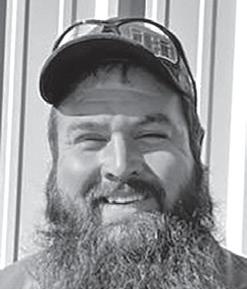











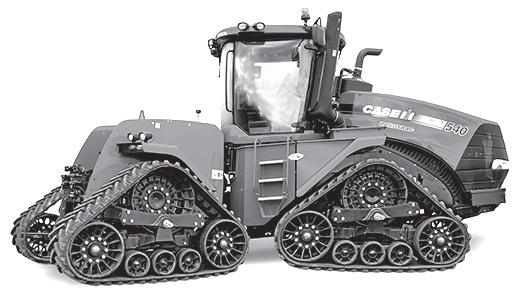







Court limits Idaho wolf trapping, snaring to protect grizzlies
By BRAD CARLSON Capital PressIdaho cannot authorize wolf trapping and snaring in grizzly bear habitat during the bears’ non-den-

Business Too Small

ning period, a federal judge in Boise has ruled.
Grizzlies are protected

We proudly support local Eastern Washington small business. State Bank Northwest salutes local entrepreneurs and small business owners who are the backbone of our economic success. If you are curious about SBA or custom loans for your business - don’t hesitate - call one of our loan specialists. We have money to lend... today!
Rockford 509.252.6080
Colfax 509.252.6070
Palouse 509.252.6090
Garfield 509.635.1361
Spokane Valley 509.789.4335
North Spokane 509.464.2701
by the federal Endangered Species Act. The March 19 ruling applies in habitat in the state’s north, central and east regions, on public and private land.
The state in 2021 substantially increased allowed wolf take and methods of take, and on private land allowed trapping and snaring year-round. The rationale was to reduce the wolf population to a level closer to U.S. Fish and Wildlife Service minimums required to avoid re-listing under the ESA.
Thirteen conservation groups claimed in a December 2021 lawsuit that Idaho Fish and Game rules for trapping and snaring wolves violate the Endangered Species Act because they threaten grizzlies.
The plaintiffs argued that Idaho’s expansion of wolf trapping and snaring causes unlawful take of grizzlies in violation of the ESA and should be stopped in the bears’ habitat until the state gets an incidental-take permit from the U.S. Fish and Wildlife Service.

An environmental lawsuit claimed Idaho’s trapping and snaring rules could hurt grizzly bears. A judge has partially agreed.
in Idaho, not to mention wolves,” Dana Johnson, attorney and policy director for Wilderness Watch, said in a release. “Grizzly bear communities in the state are already struggling. The last thing grizzlies need is to be collateral damage in Idaho’s war on wolves.”
StateBankNorthwest.com







State game managers in a Jan. 4 hearing countered that since no grizzlies have been caught by trappers who complied with the state rules, changing them would be speculative and thus unjustified.







“There is ample evidence in the record, including from Idaho’s own witnesses, that lawfully set wolf traps and snares are reasonably likely to take grizzly bears in Idaho,” U.S. Magistrate Judge Candy W. Dale wrote in a March 19 decision and order.
However, conservation groups “established that Idaho’s recreational trapping laws and rules violate the ESA,” but “did not establish their entitlement to the broad remedy they seek,” according to the decision.
Idaho cannot authorize wolf trapping and snaring in the grizzly habitat areas “except during the time period when it is reasonably certain that almost all grizzly bears will be in dens: Dec. 1 to Feb. 28,” Dale wrote.
The ruling “provides a reprieve for grizzly bears
Grizzlies “face too many barriers in recovering throughout Idaho ecosystems and it’s good to see this reckless trapping policy crossed off the list of concerns,” Nick Gevock, field organizing strategist for the Sierra Club, said in the release. Much work remains “to ensure grizzlies have the room and safety they need to gain healthy populations throughout Idaho and beyond.”
“While wolf trapping seasons will change to comply with the order, we’re considering our legal options to reverse a decision we believe is wrong based on the law and on-the-ground reality,” Idaho Fish and Game Director Jim Fredericks said in a release. The decision punishes successful grizzly conservation efforts, restricts recreational opportunities and “limits state wildlife management based on a notion of grizzly bear habitat, including outside of occupied ESA recovery areas and resident grizzly bear populations.”
All wolf trapping seasons allow nonlethal foothold traps. Snaring wolves is more restricted and is not allowed in areas that grizzlies inhabit, except during their winter hibernation period, according to the department.
EPA warns pregnant women about herbicide
By DON JENKINS Capital PressThe Environmental Protection Agency took the rare step Monday of warning pregnant farmworkers about the risks of DCPA, a herbicide used to keep early season weeds from crowding out crops such as onions, broccoli and cabbage.
Fetuses in pregnant rats exposed to low doses of DCPA showed changes in thyroid hormones linked to low birth weights, and impaired intelligence and motor skills, according to the EPA.
The EPA said it may propose prohibiting DCPA, marketed under the trade name Dacthal. Canceling registered uses may take months or even years, according to the EPA.
“DCPA exposure represents a serious risk to pregnant workers and their children, so it’s imperative that we warn people about those risks now,” EPA assistant administrator for chemical safety Michal Freedhoff said in a statement.
Efforts to obtain comment from DCPA’s only maker, California-based AMVAC Chemical Corporation, were unsuccessful. The company has defended the herbicide in communications to the EPA.
The herbicide also has support from farm groups, while organizations such as the Center for Food Safety and law firm Earthjustice have urged the EPA to ban it.
EPA rejects company’s proposals
In response to EPA’s concerns, AMVAC this year voluntarily canceled DCPA products to control weeds in turf, reducing potential exposure to pregnant women on golf courses and athletic fields.
AMVAC also proposed measures to reduce potential exposure to unborn children from applications on farms.
The measures include eliminating some uses, reducing application
rates, prohibiting aerial spraying, 150-foot buffers between fields and homes, and requiring pesticide handlers to wear maximum protection equipment
In a letter in late March, the EPA told AMVAC the measures were not enough. Although a pregnant woman may not be impacted, her unborn child exposed to DCPA may suffer lifelong damage, according to the EPA.
An EPA assessment acknowledges DCPA works on a wide variety of weeds and that it’s safe to use on crops. DCPA protects slow to emerge plants from early season weeds, according to the EPA.
DCPA is more expensive than alternatives, but remains popular, the agency noted.
“Growers willingness to pay a premium for DCPA suggests that DCPA cannot be easily replaced with other available herbicides,” the assessment states.
Important in California
DCPA is used yearround in California. Broccoli growers in the Salinas Valley and onion farmers in northeast California are especially reliant on DCPA, according to the California Specialty Crops Council.

Onion growers in the Tulelake area, near the Oregon border, apply DCPA to kill weeds between planting and when onions emerge a month later, the council’s executive director, Gary Van Sickle, said in comments to the EPA.
“Without Dacthal, growers will incur excessive hand labor costs as well as significant reduction in yield and quality of harvested onions,” Van Sickle stated.
Other crops commonly protected by DCPA include radishes, kale, cauliflower and Brussels sprouts. Growers of minor specialty crops would be especially hard-pressed to find alternatives, according to the EPA assessment.




































